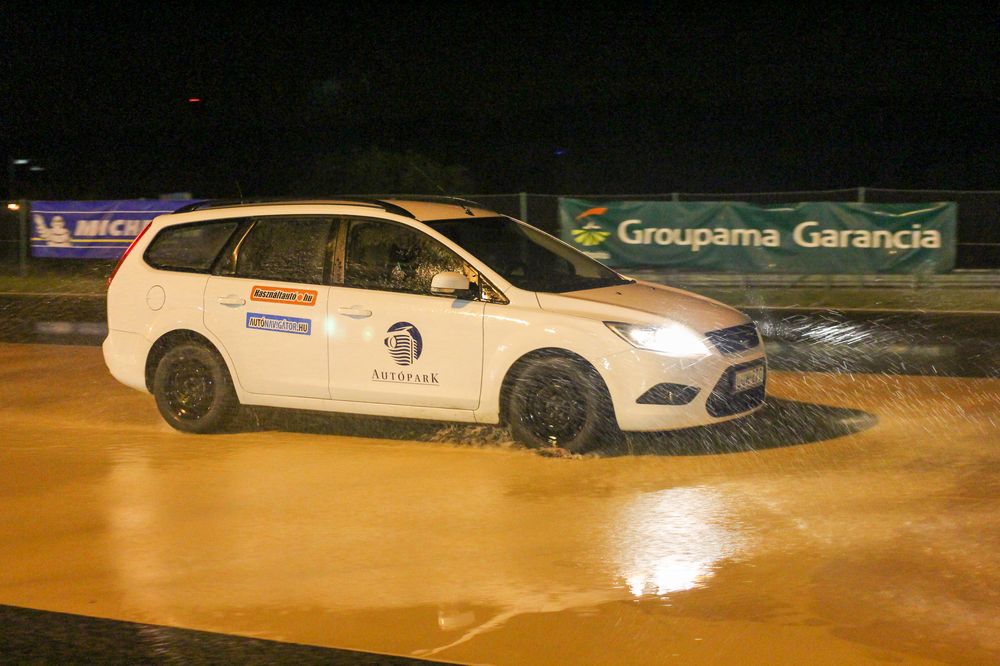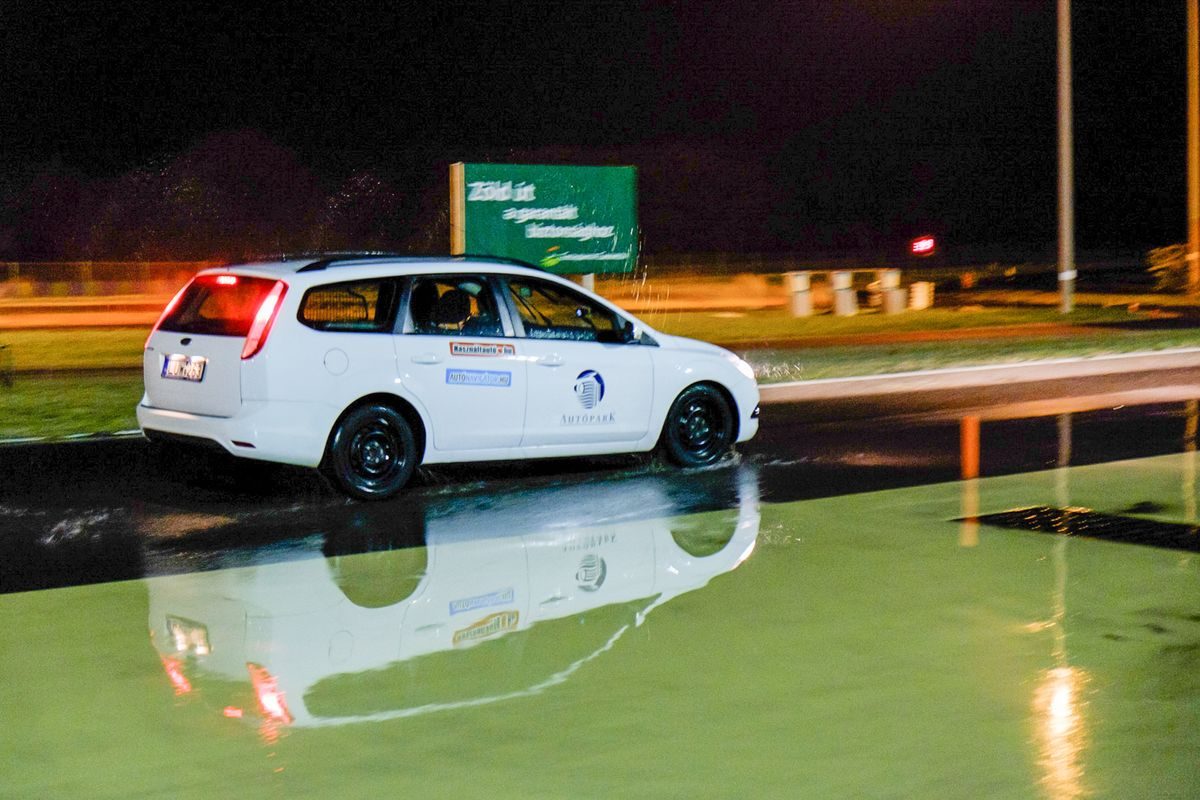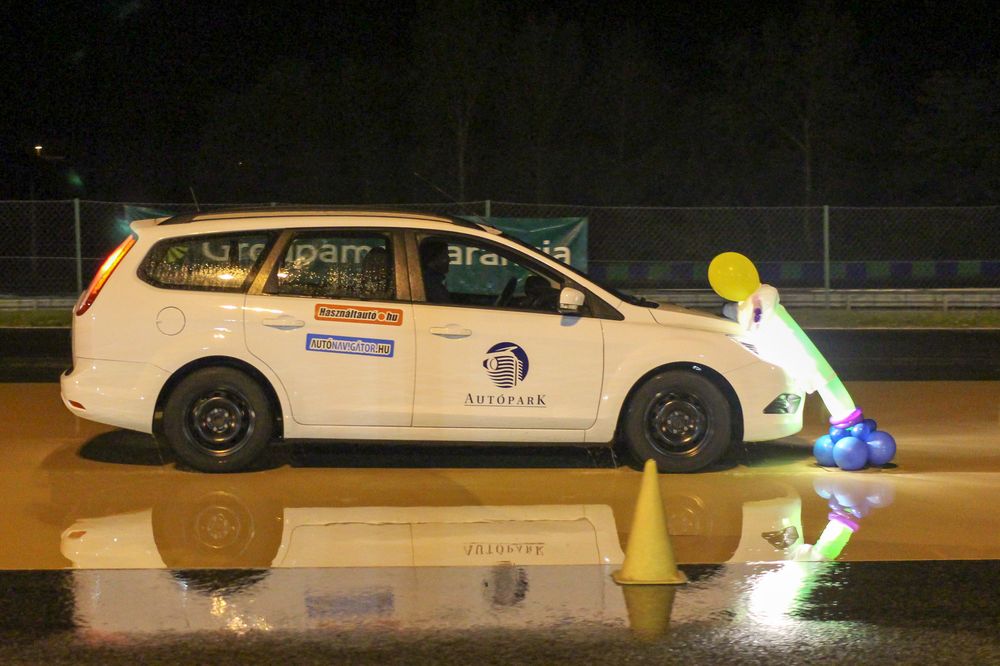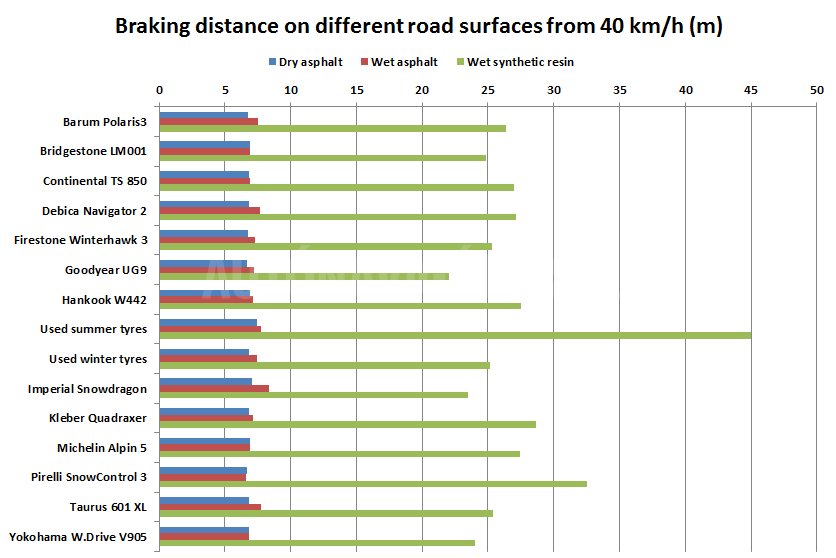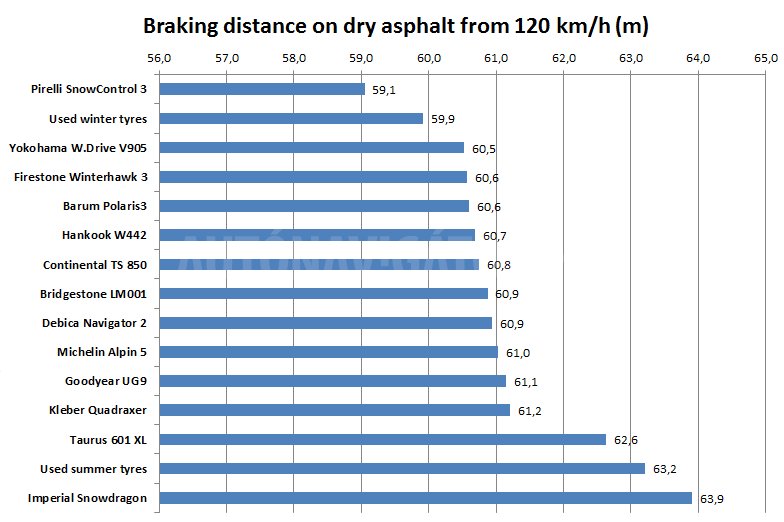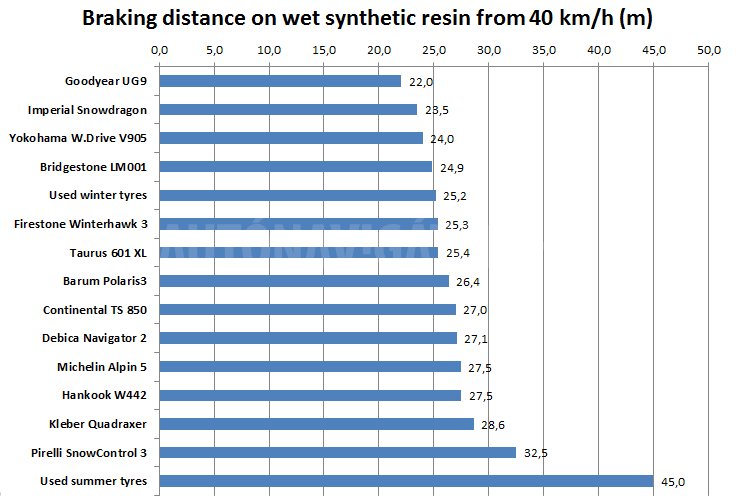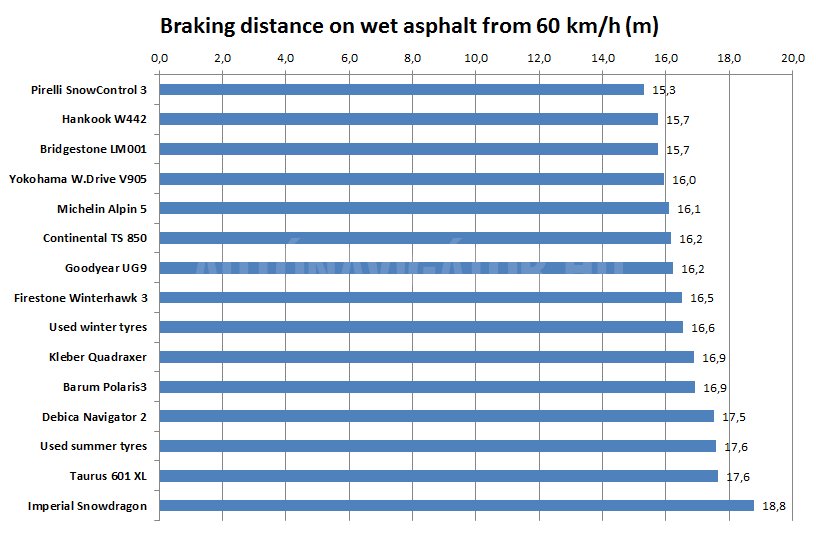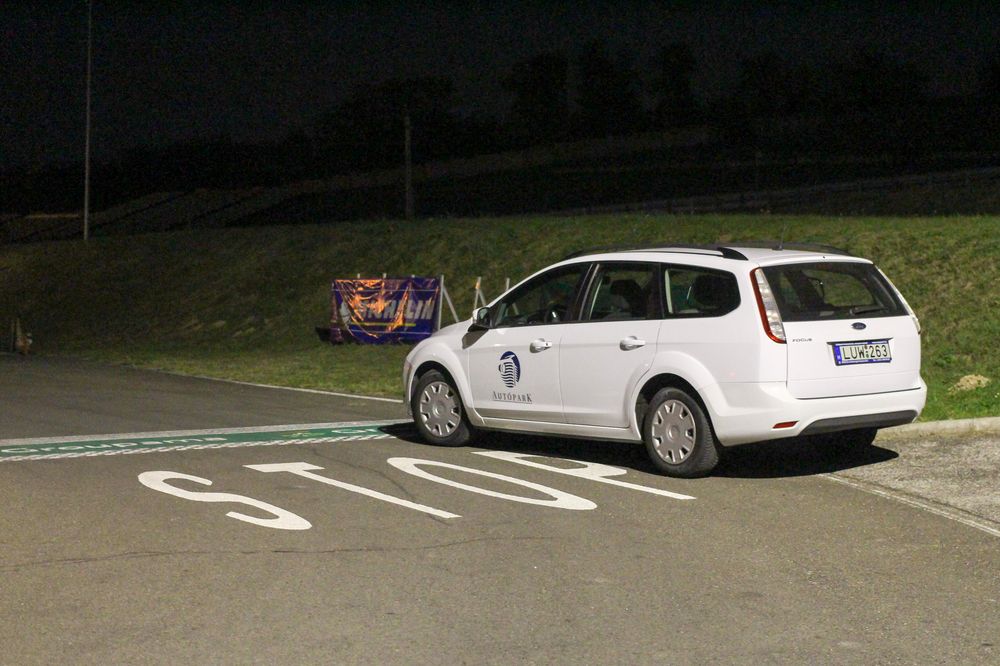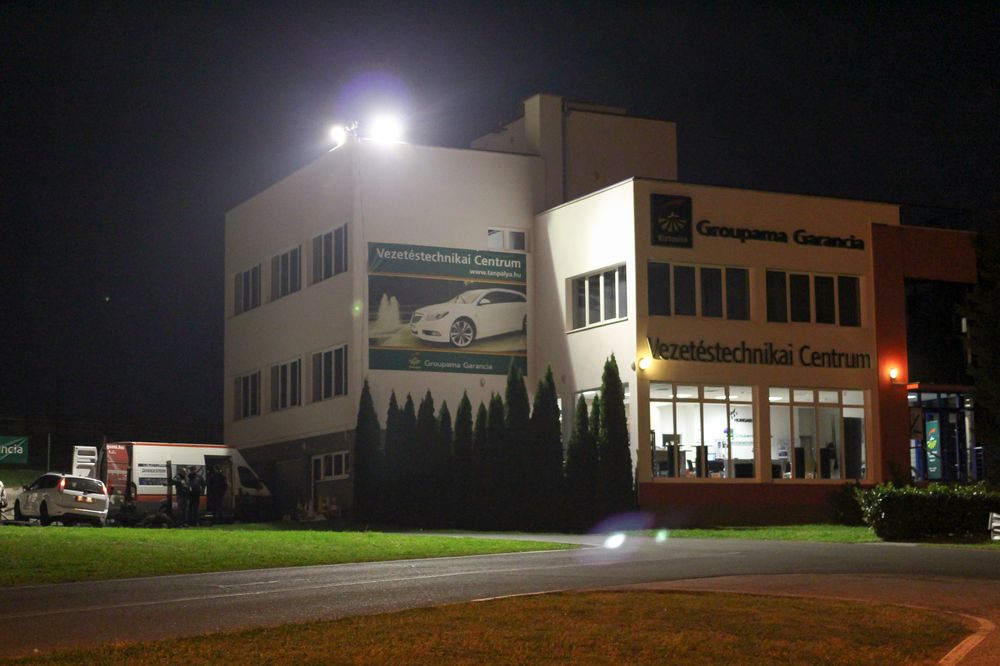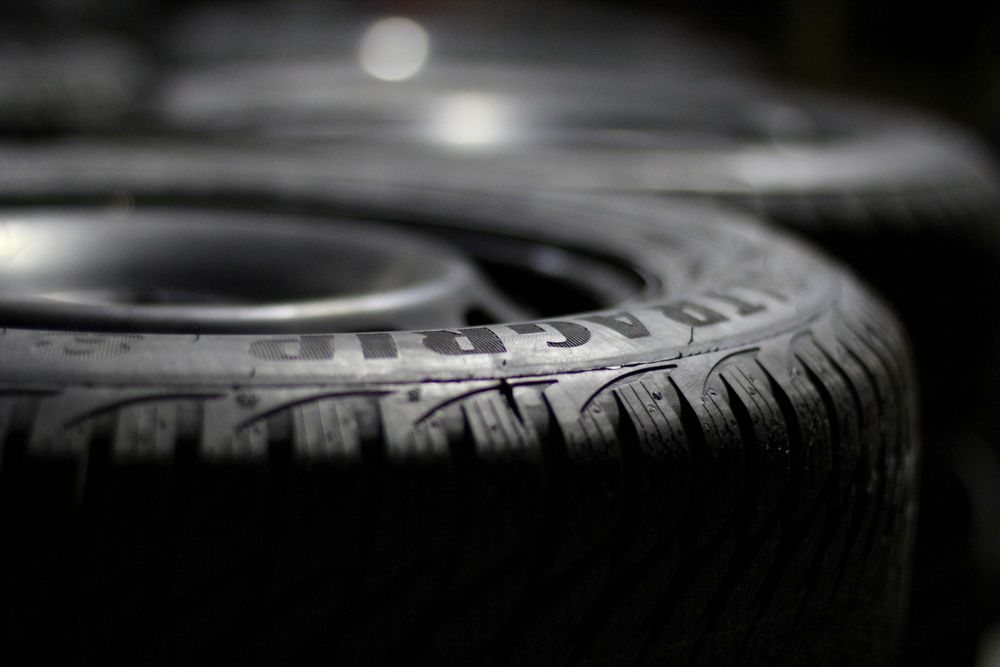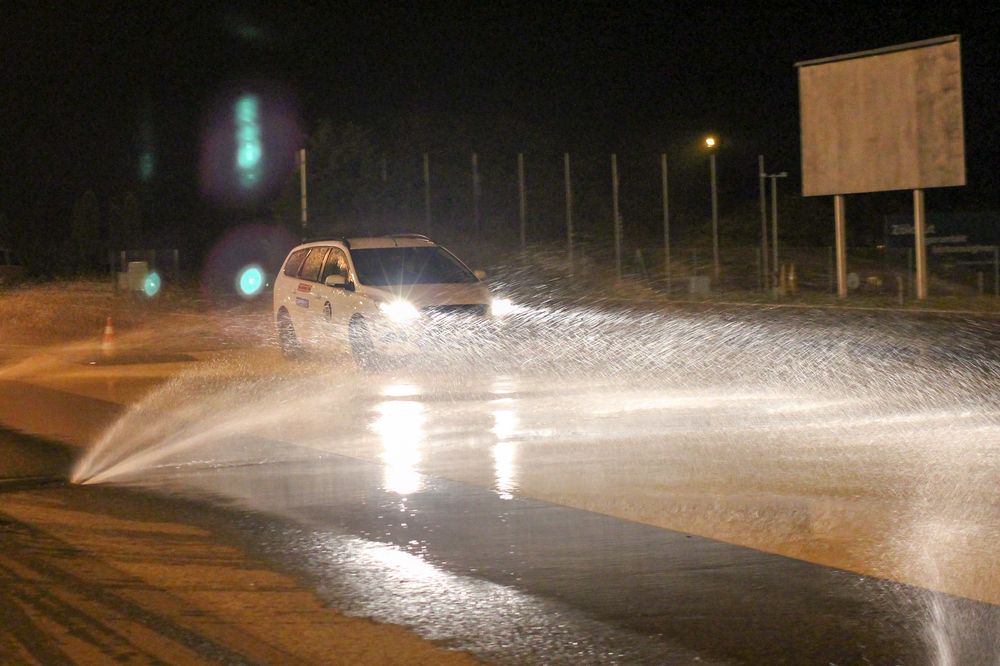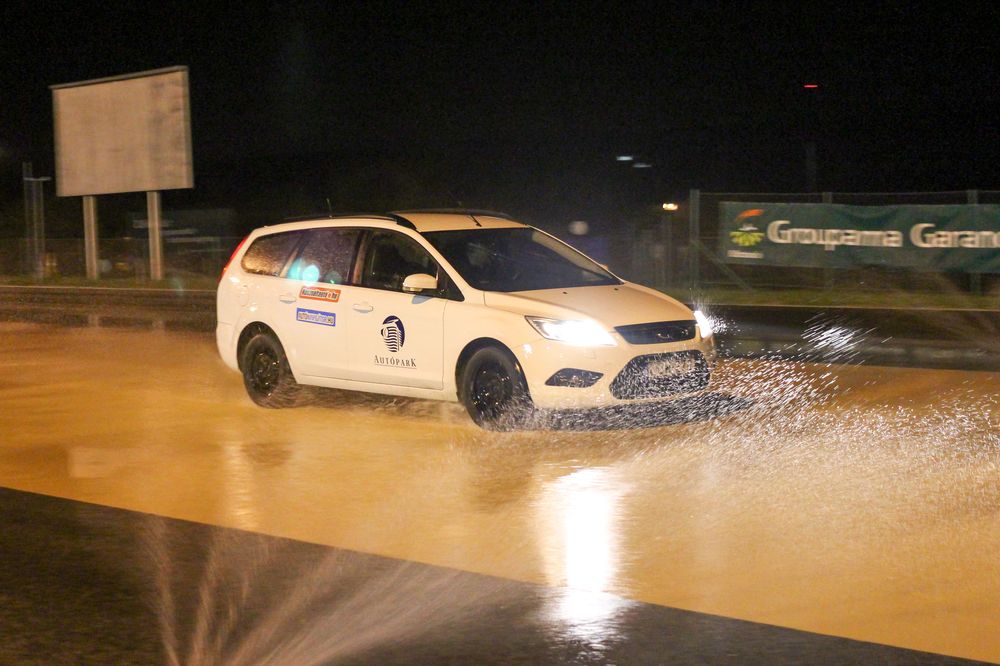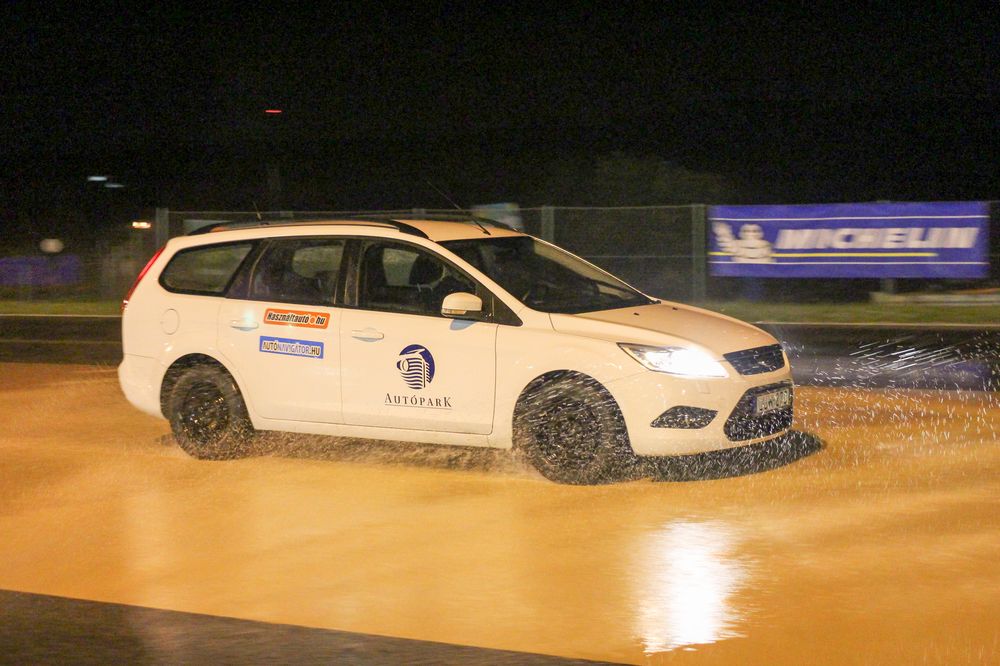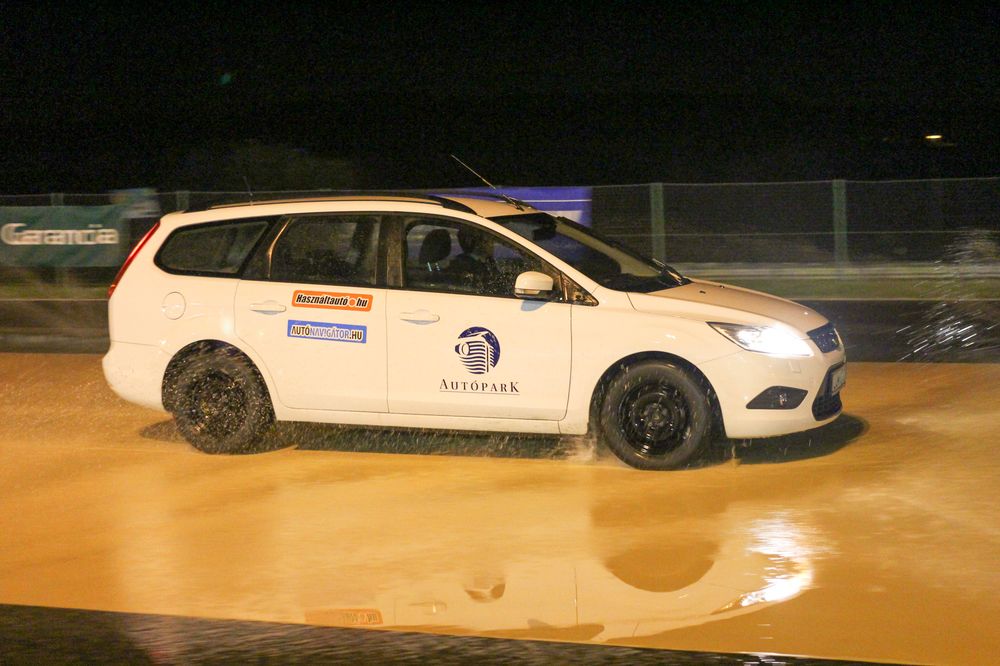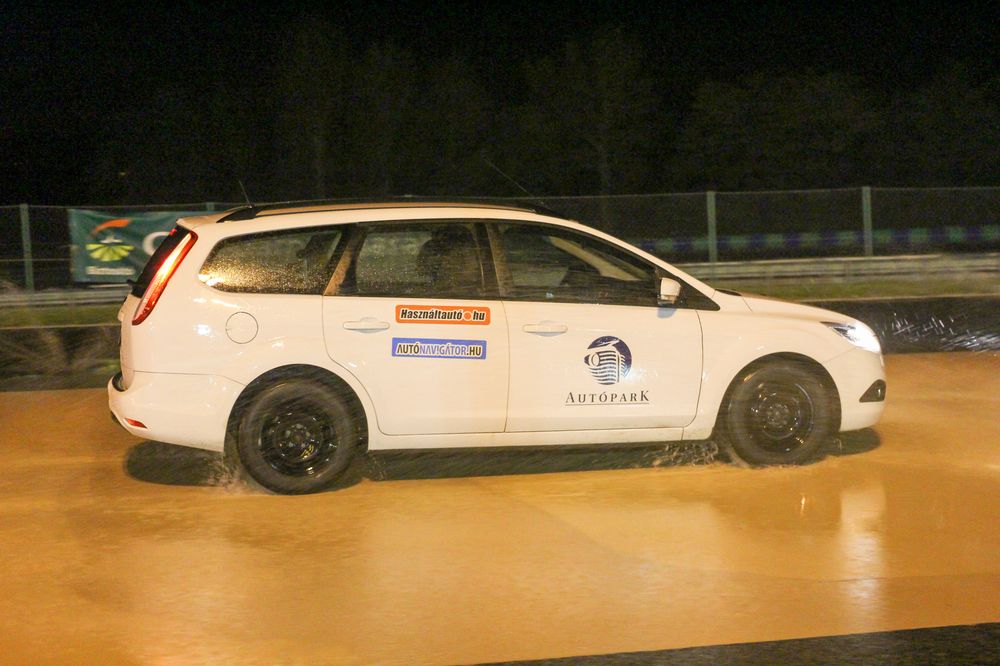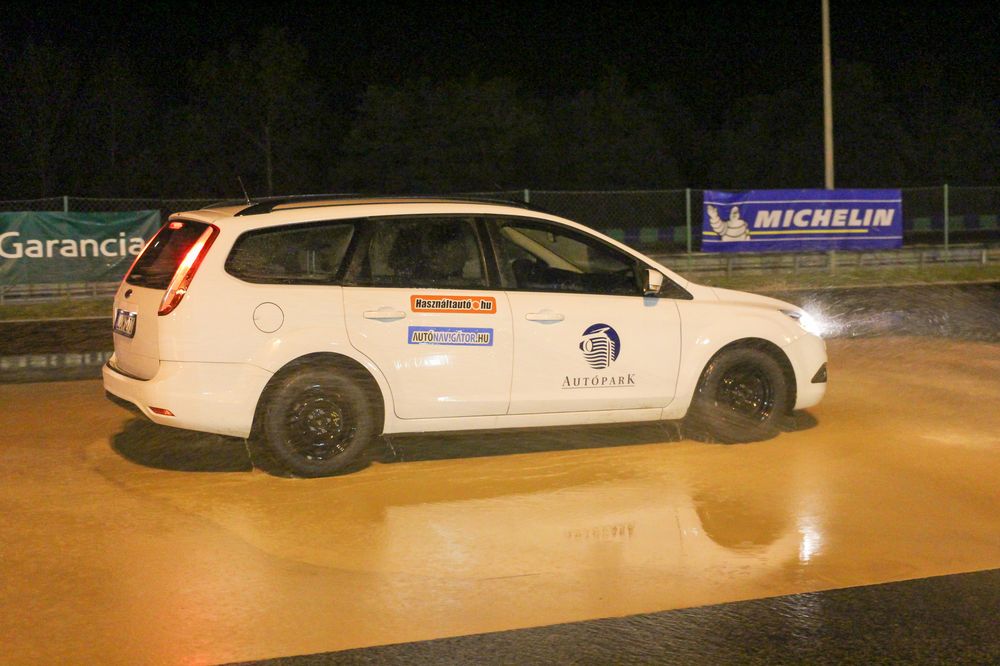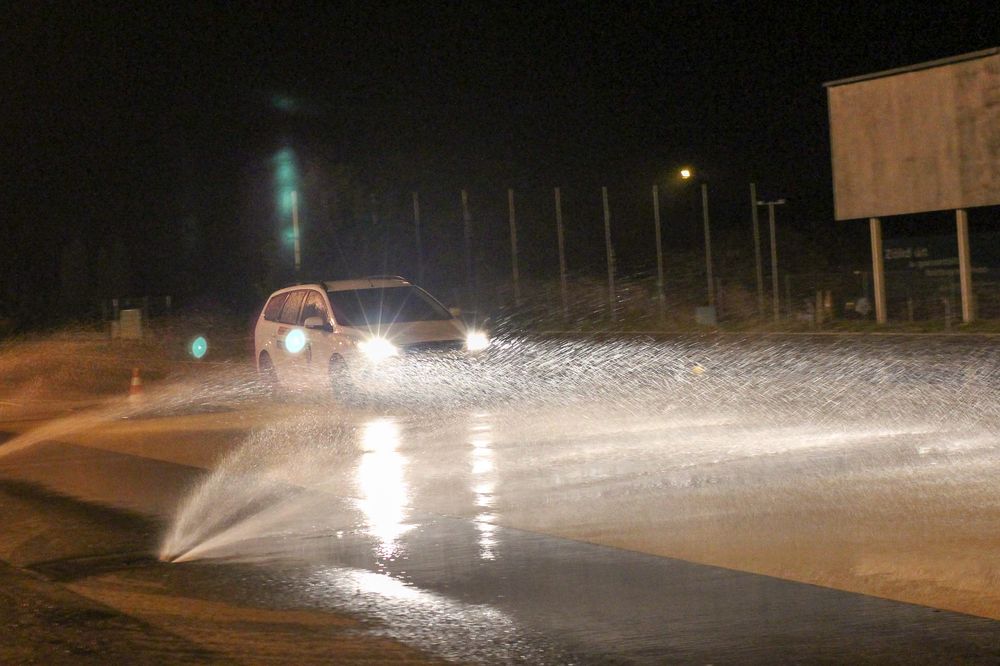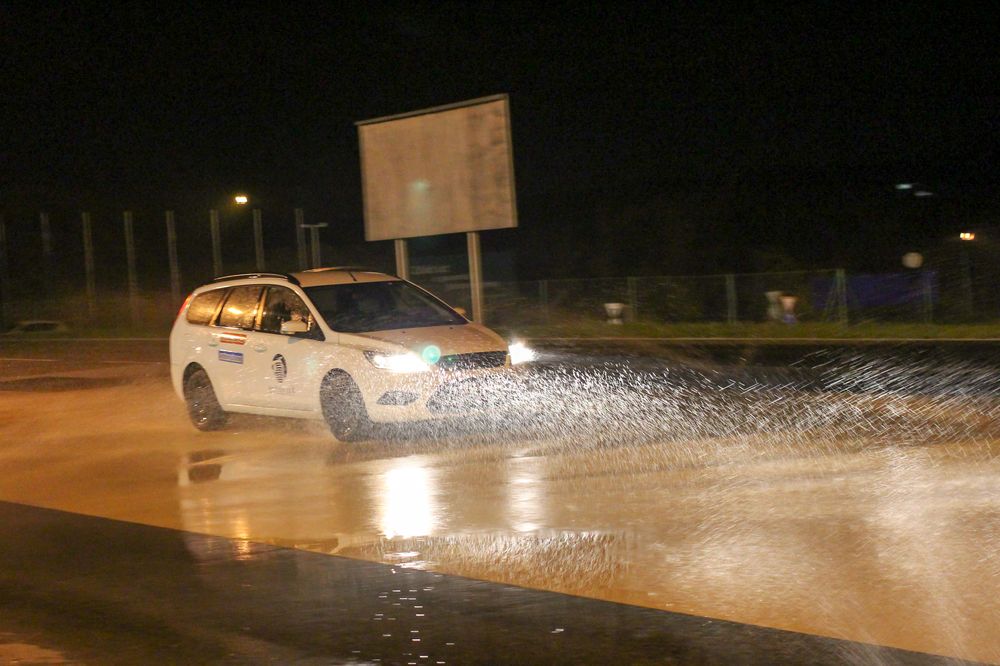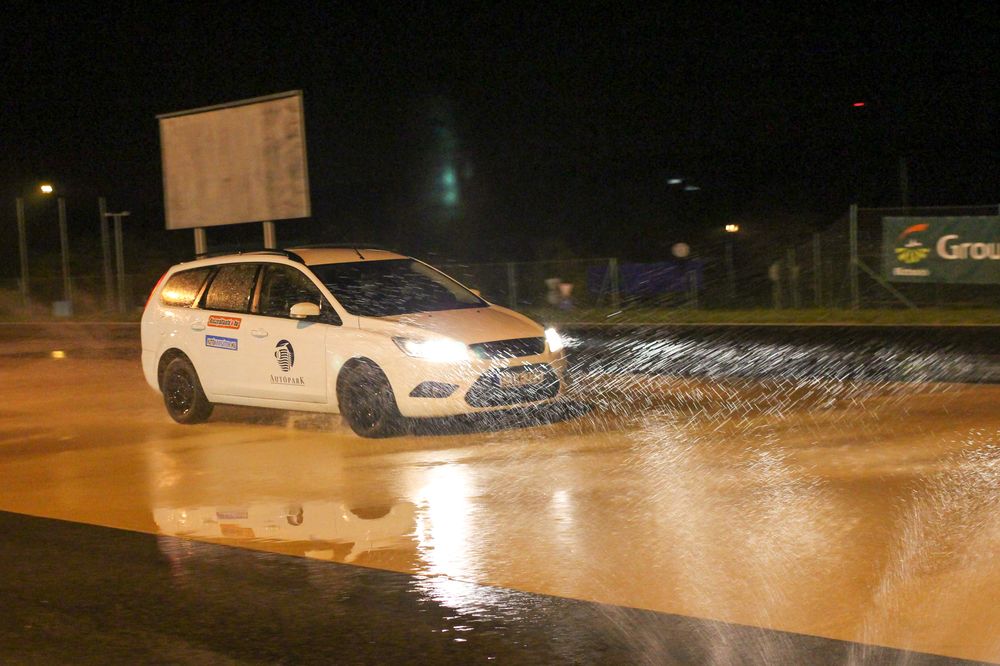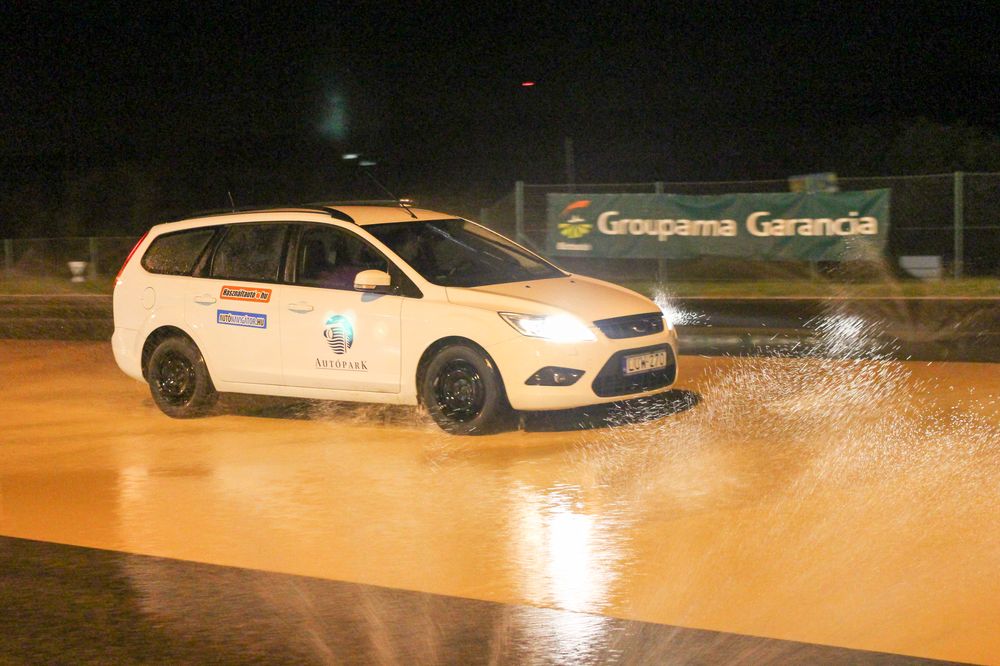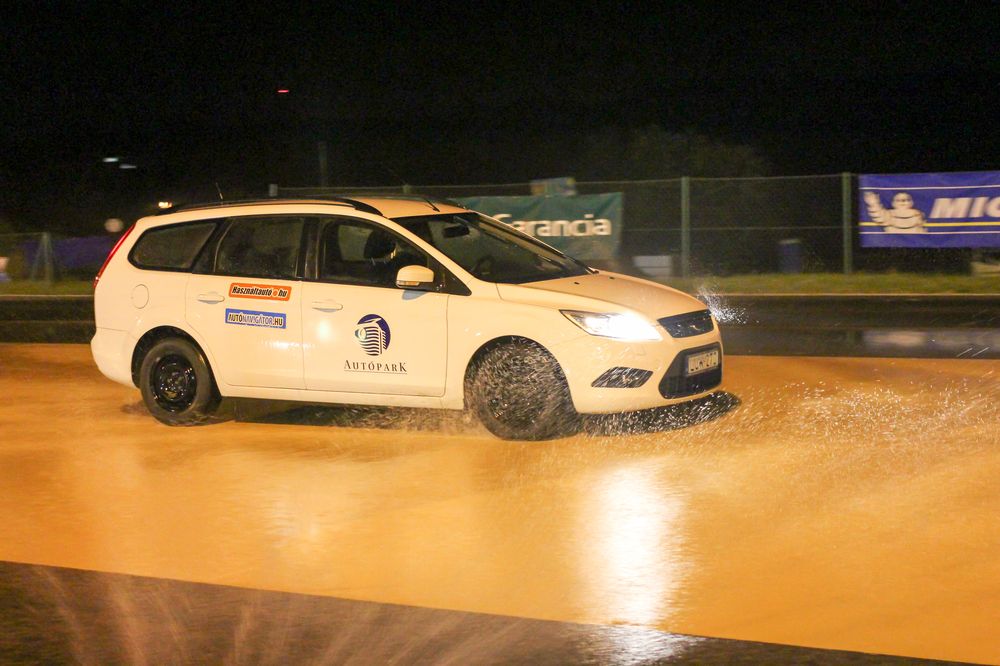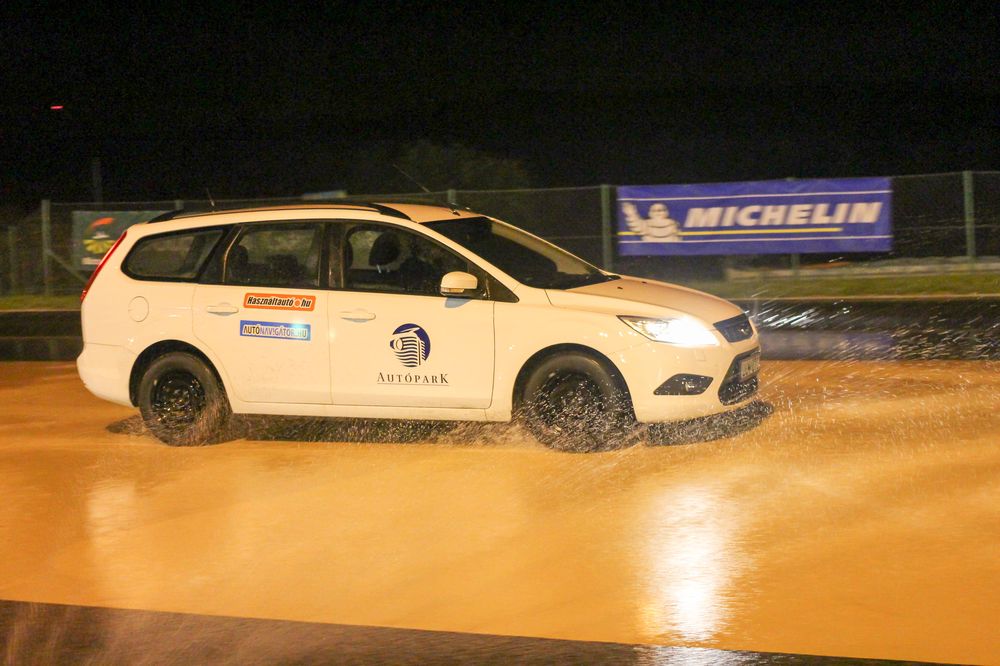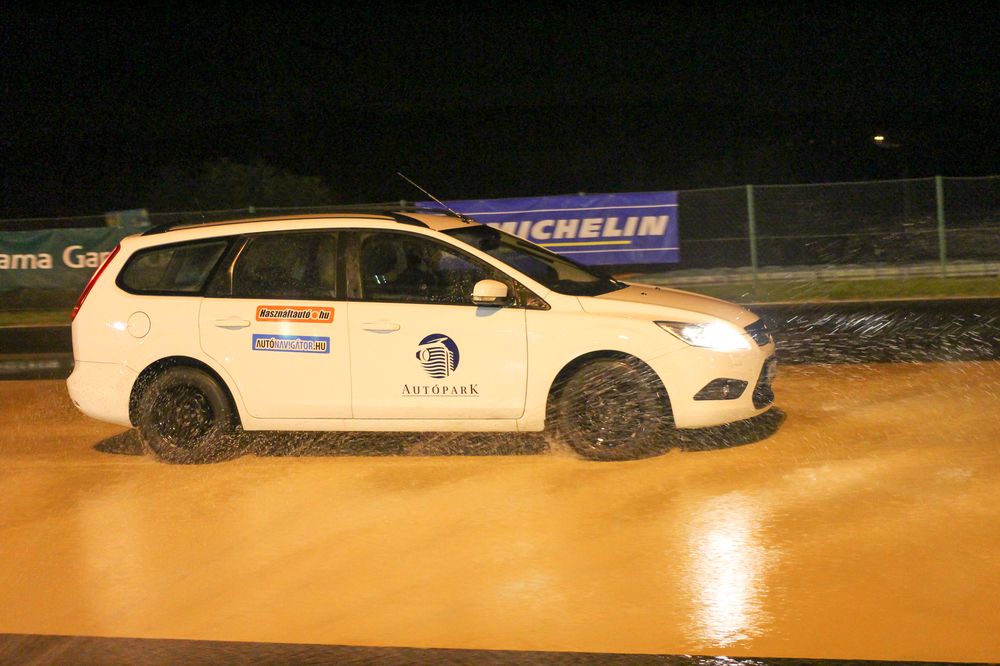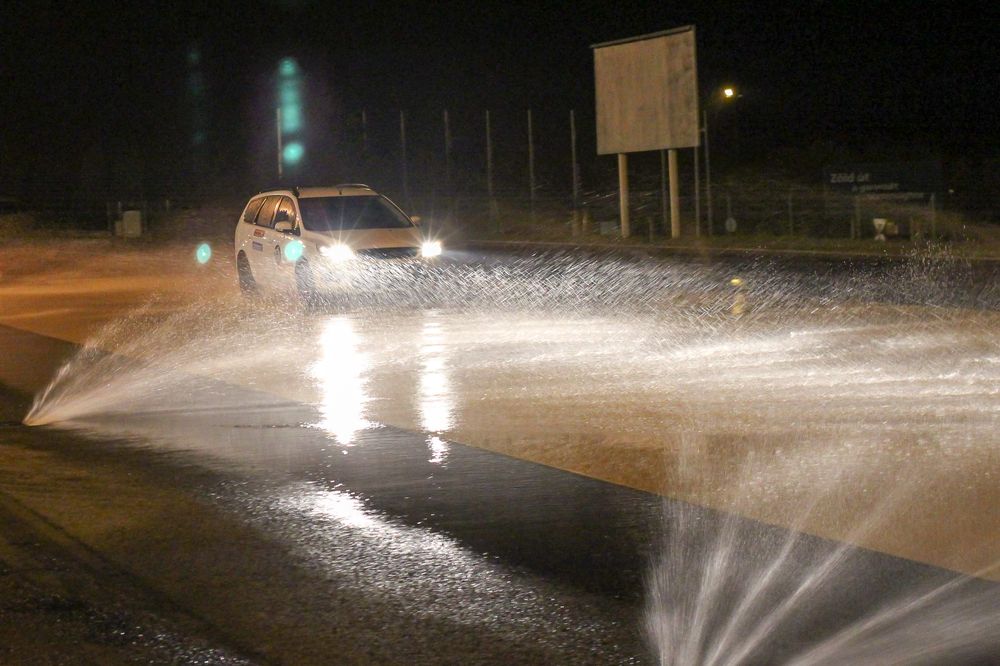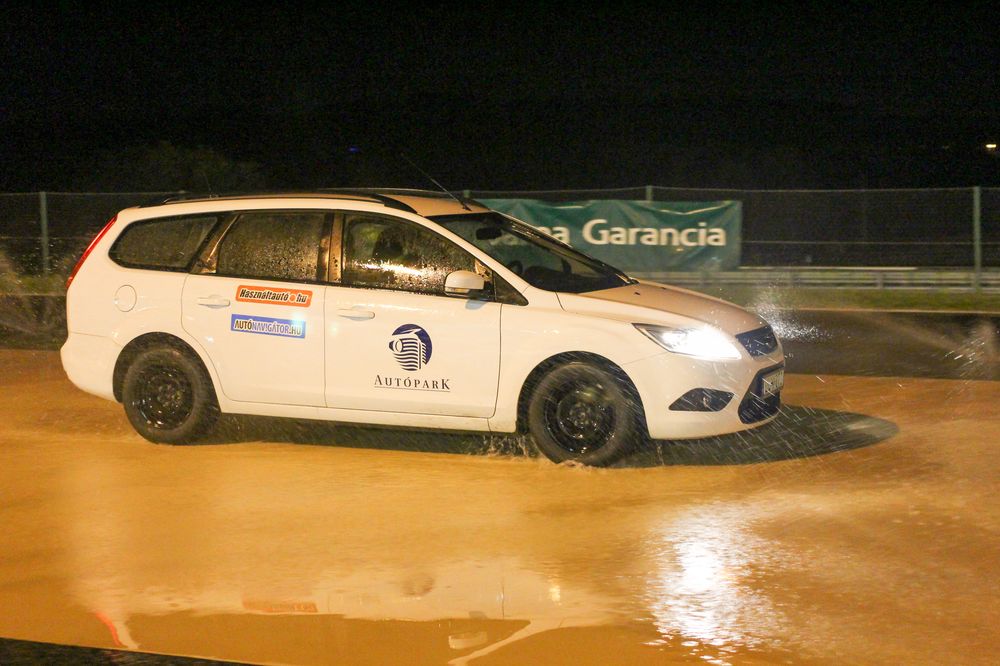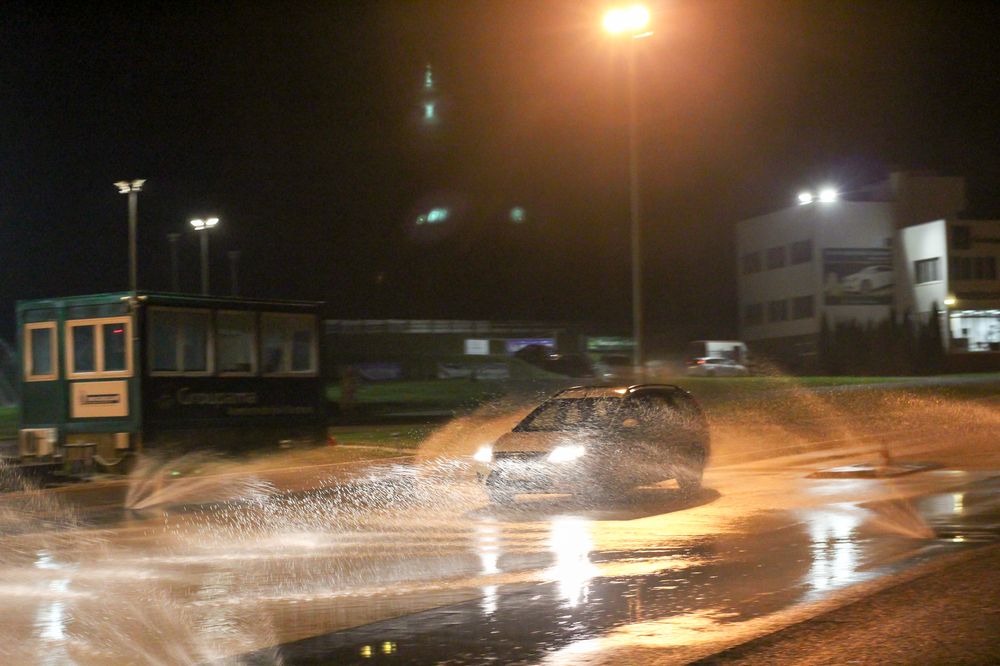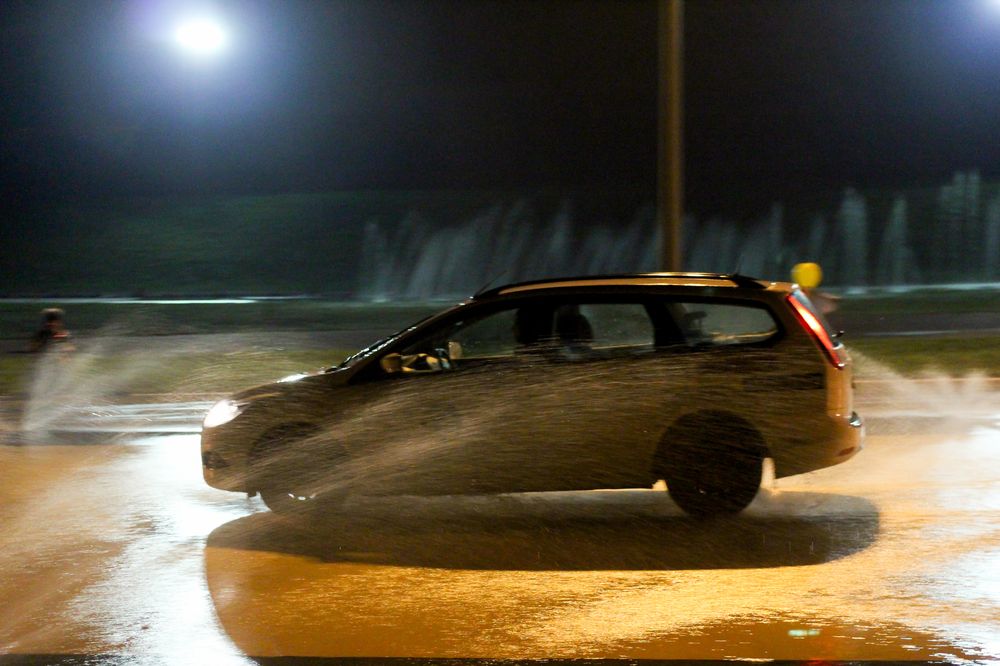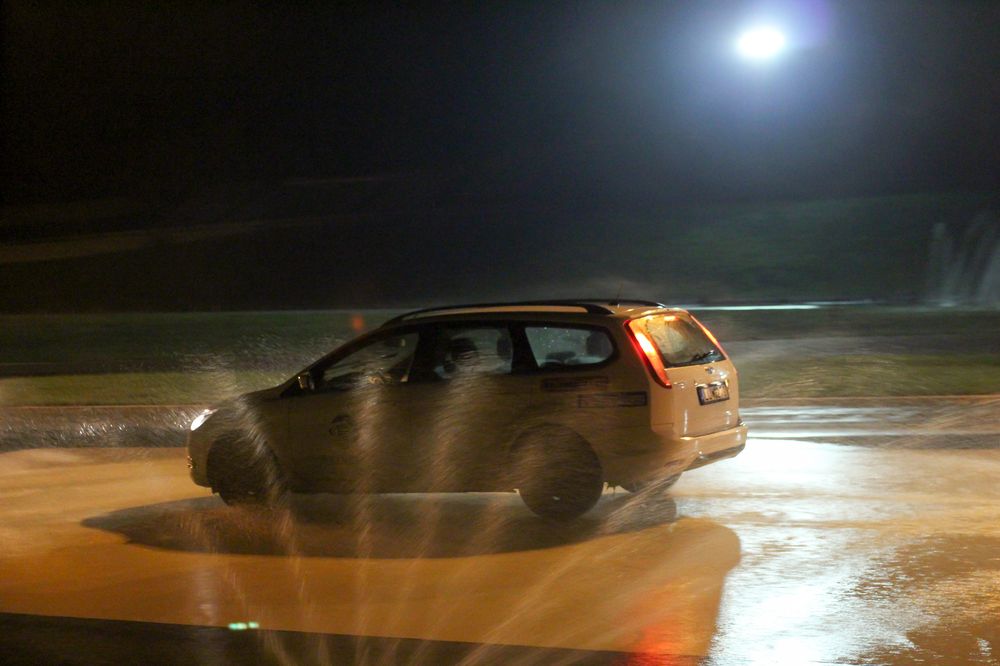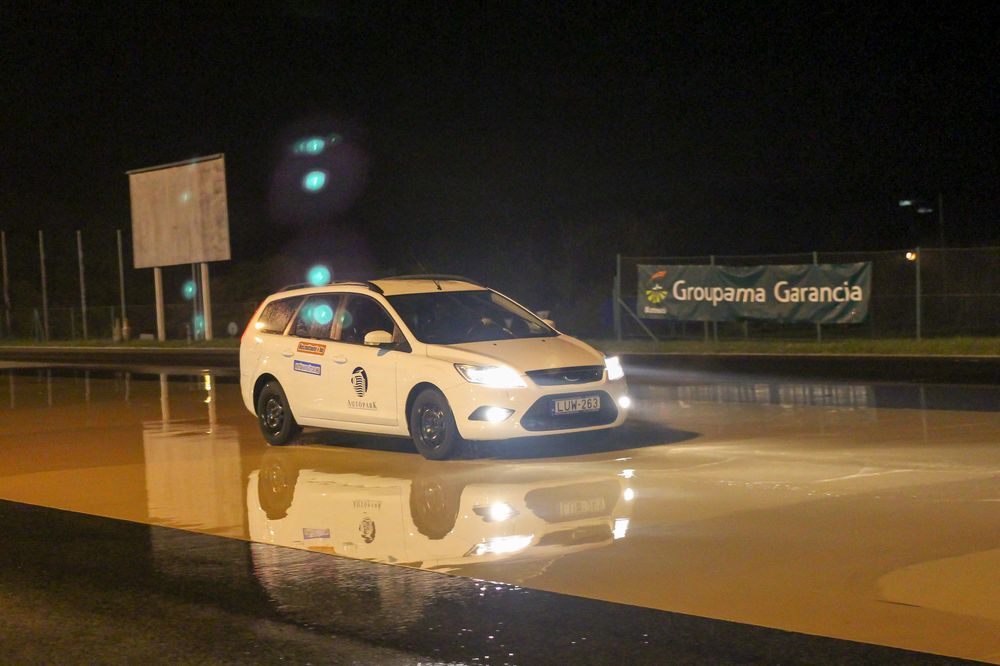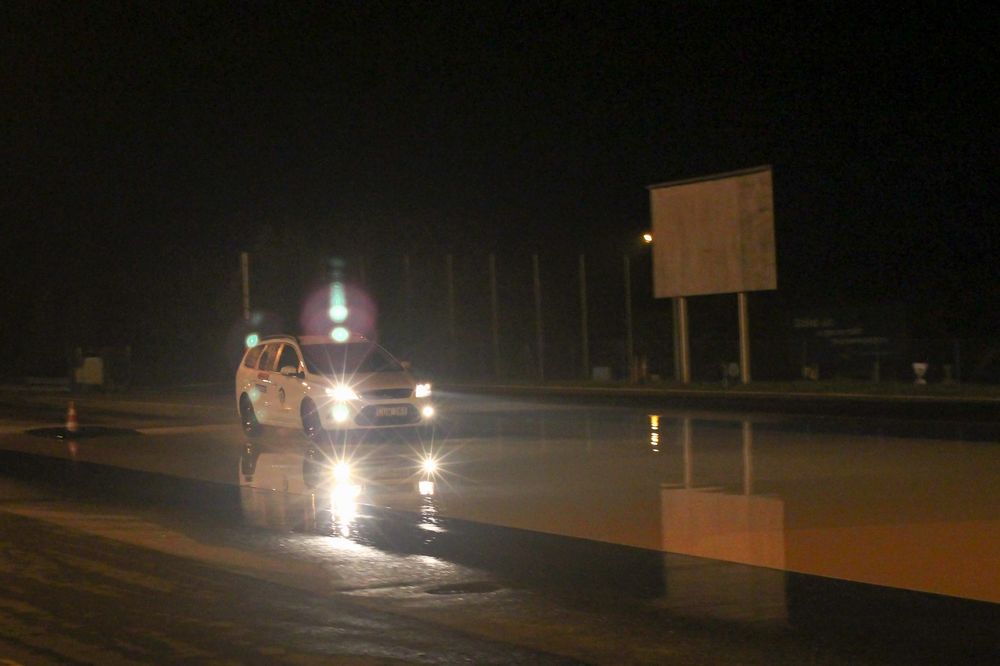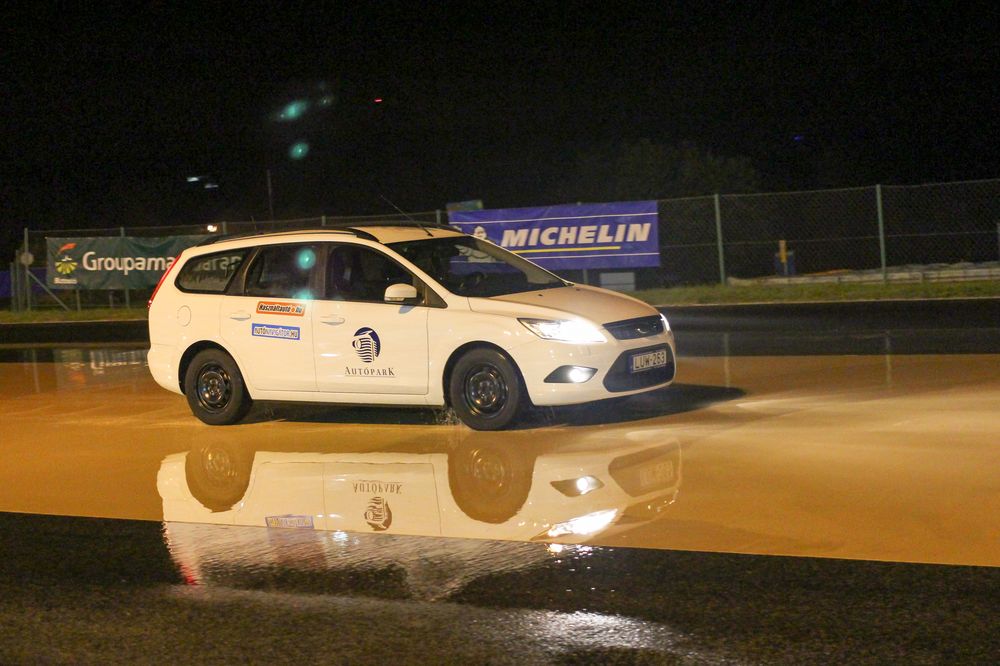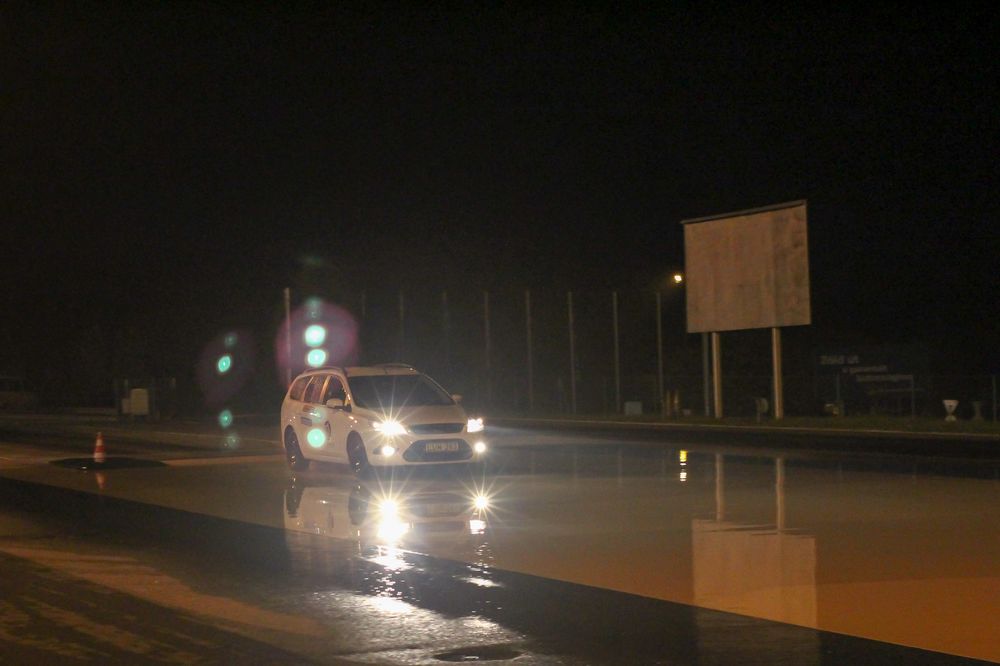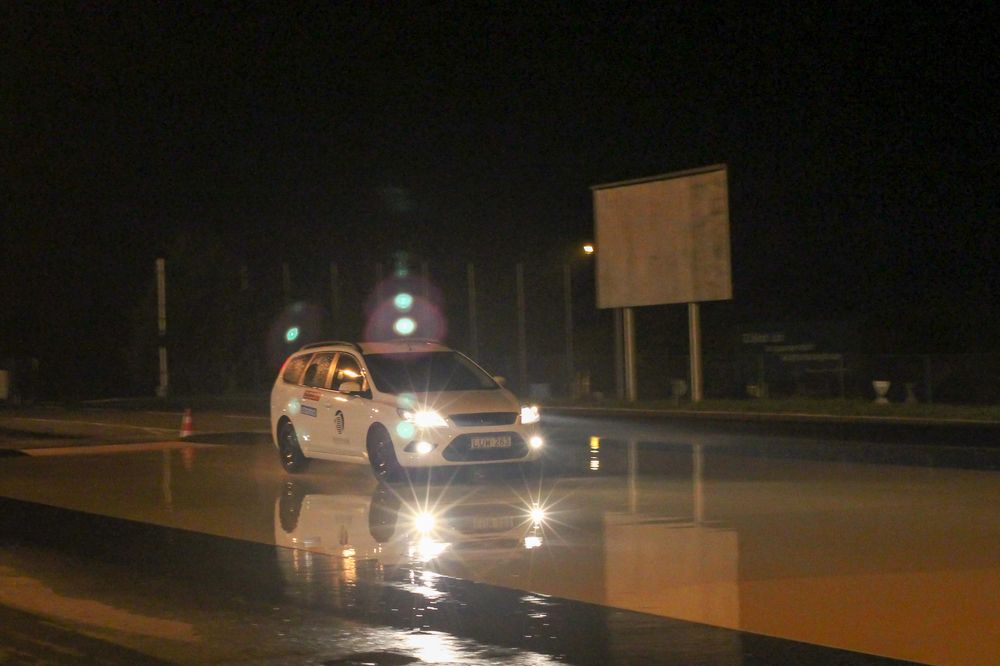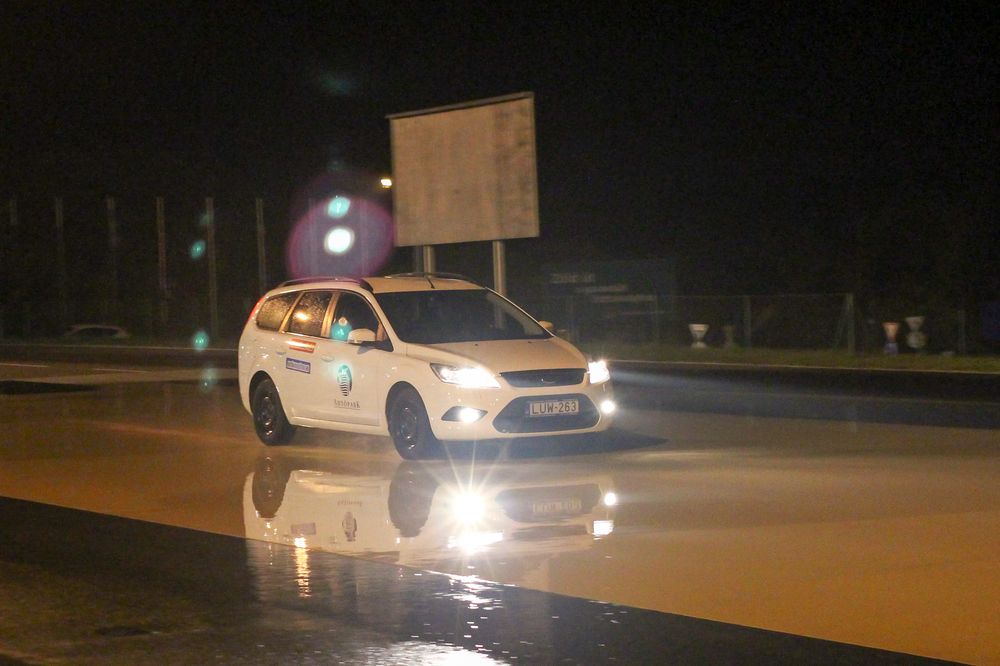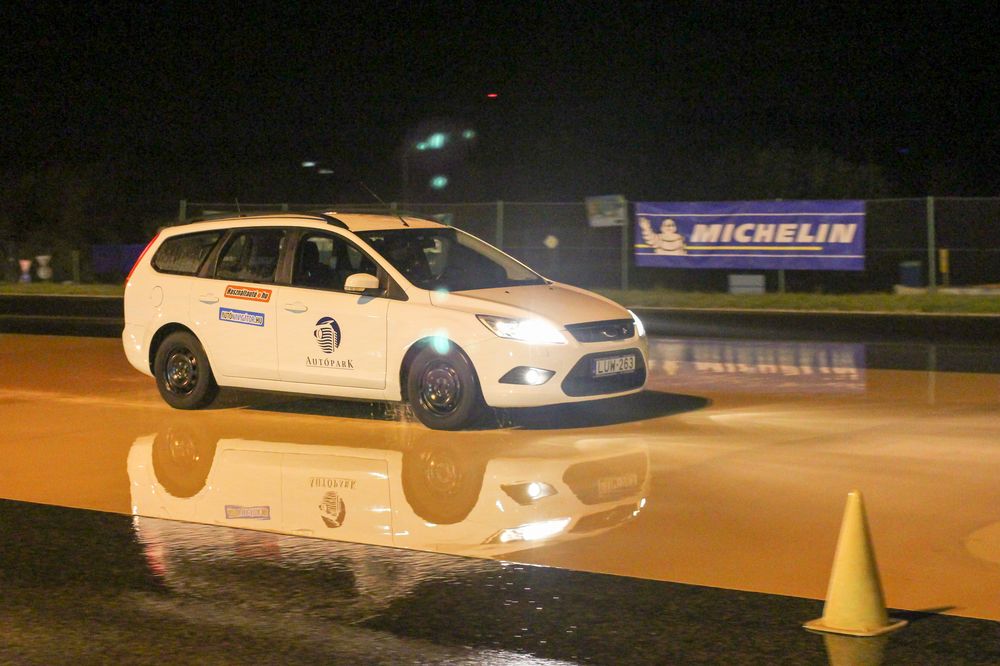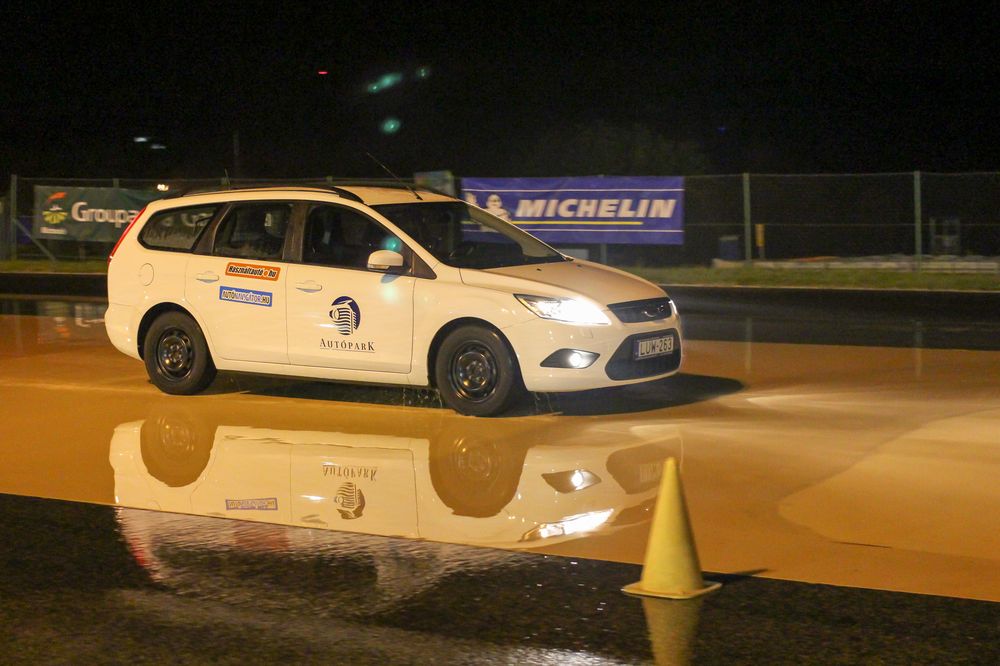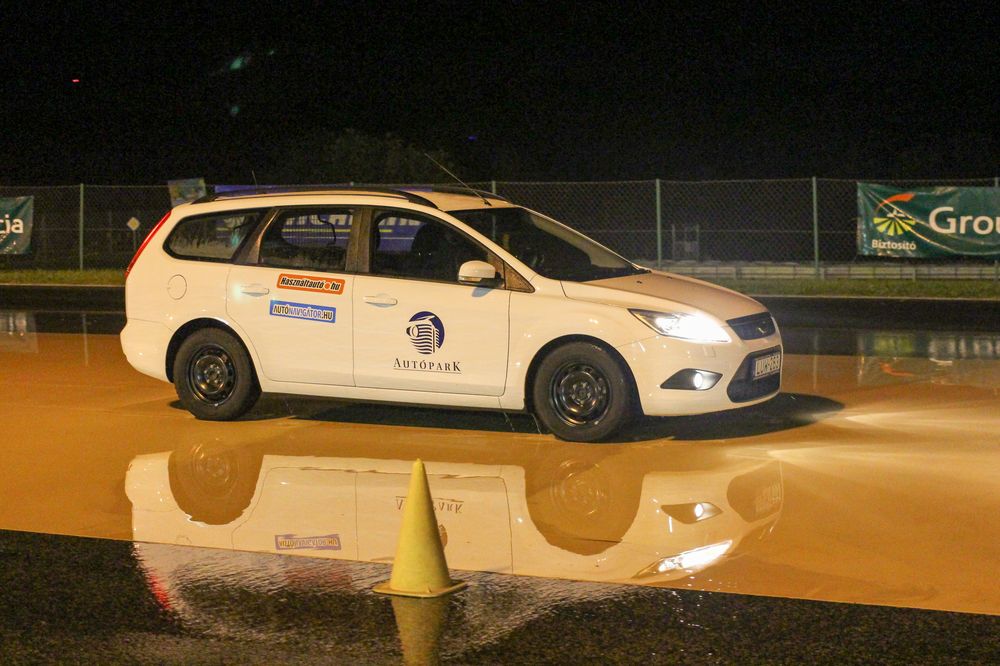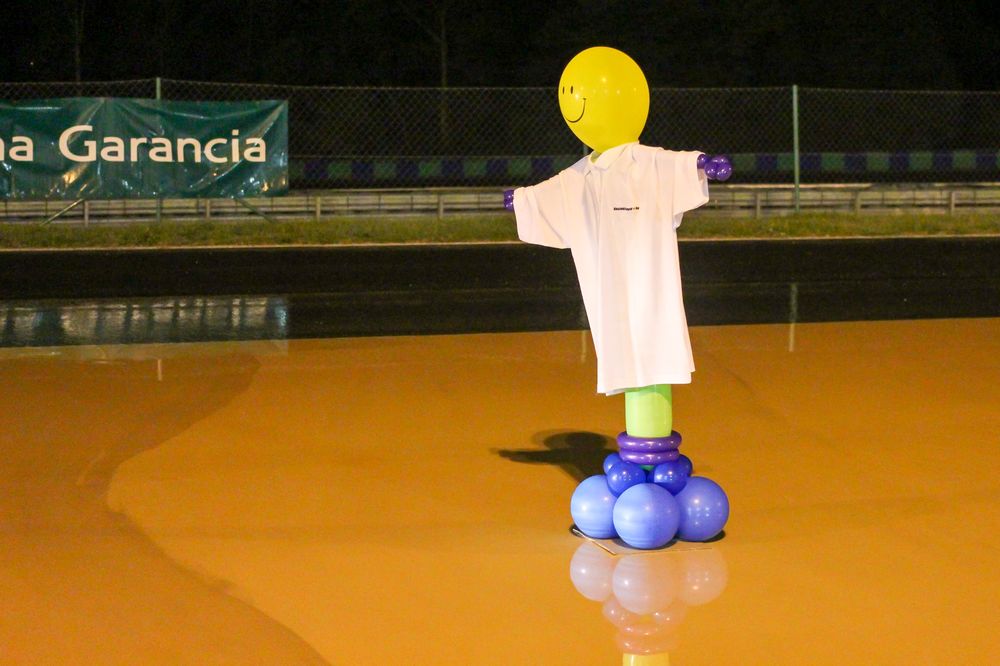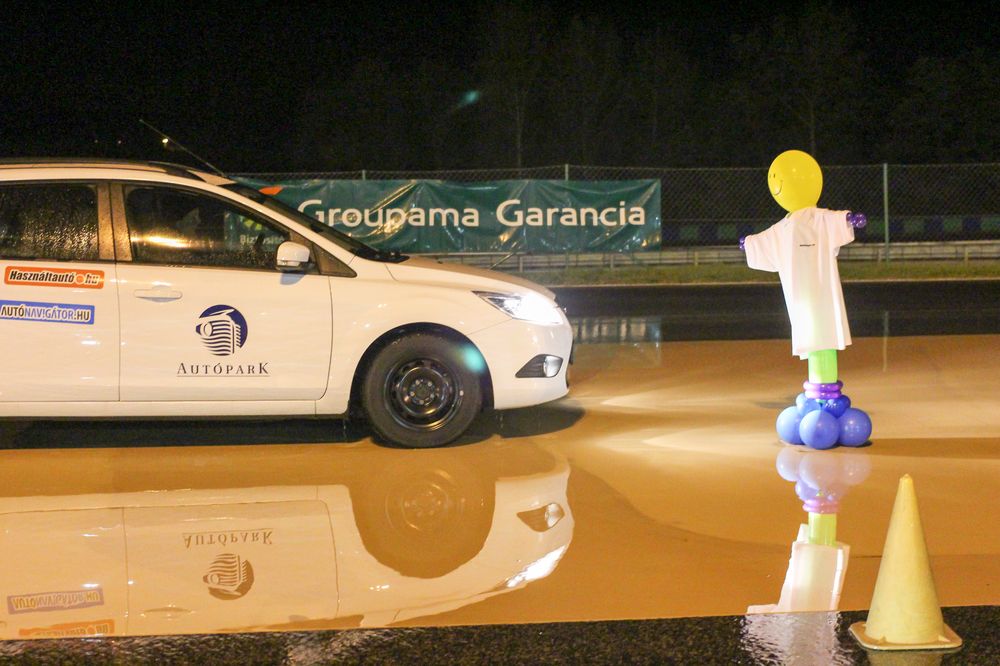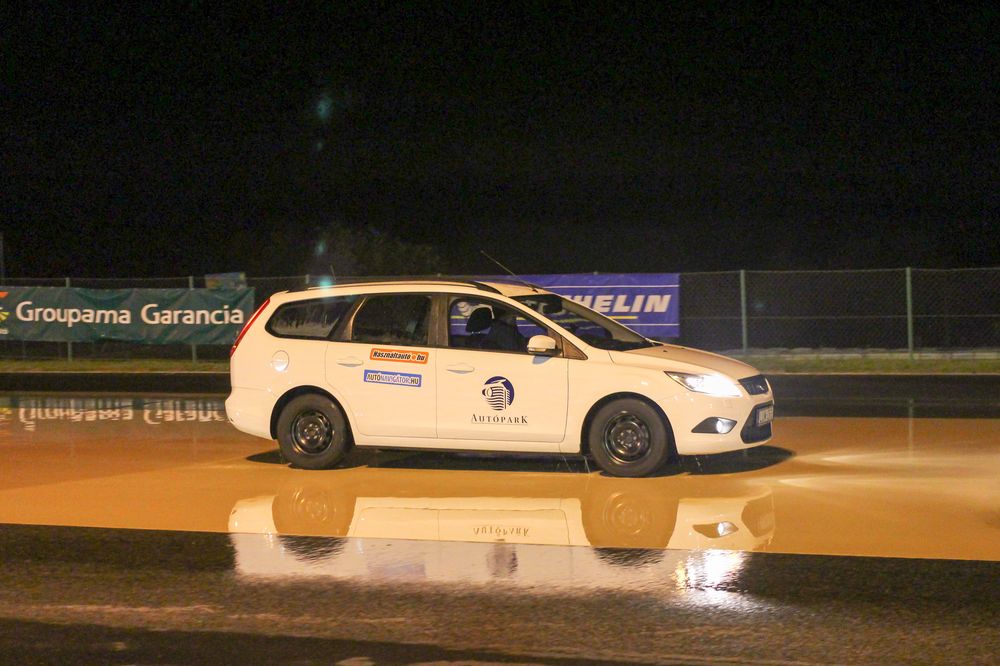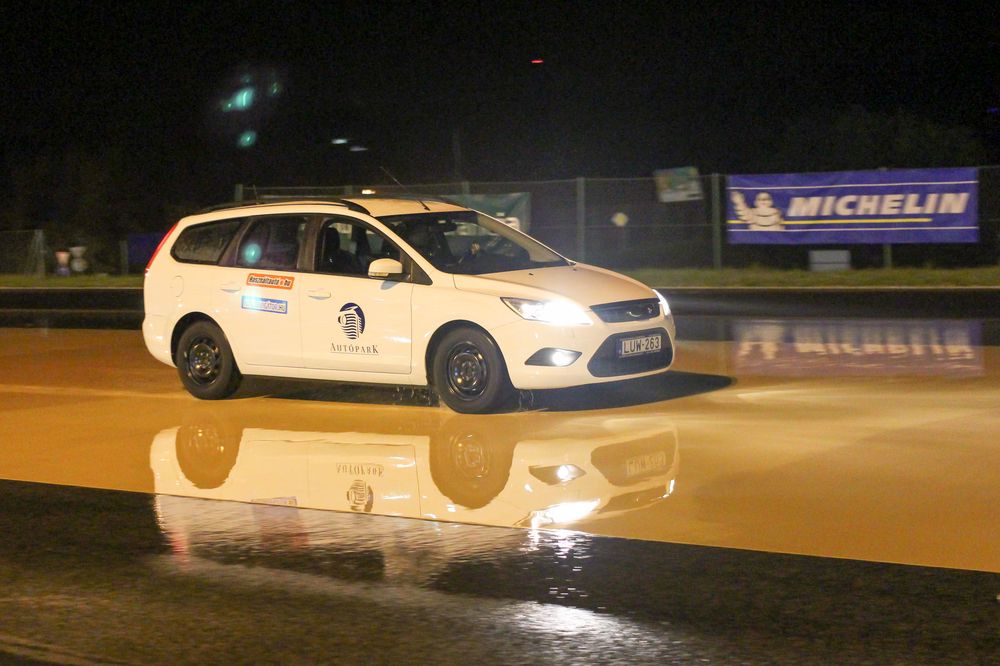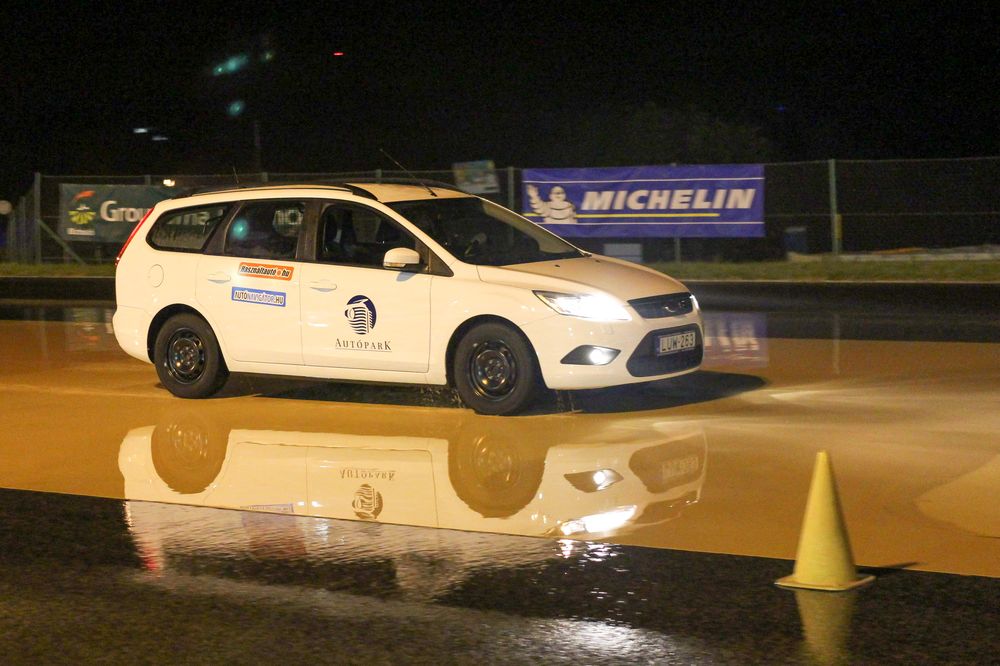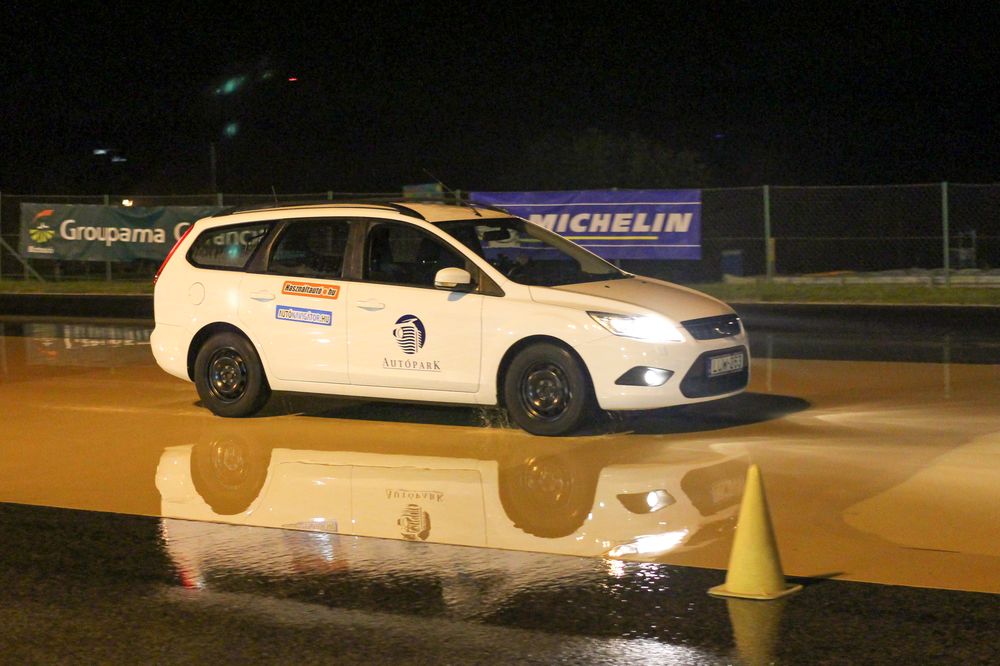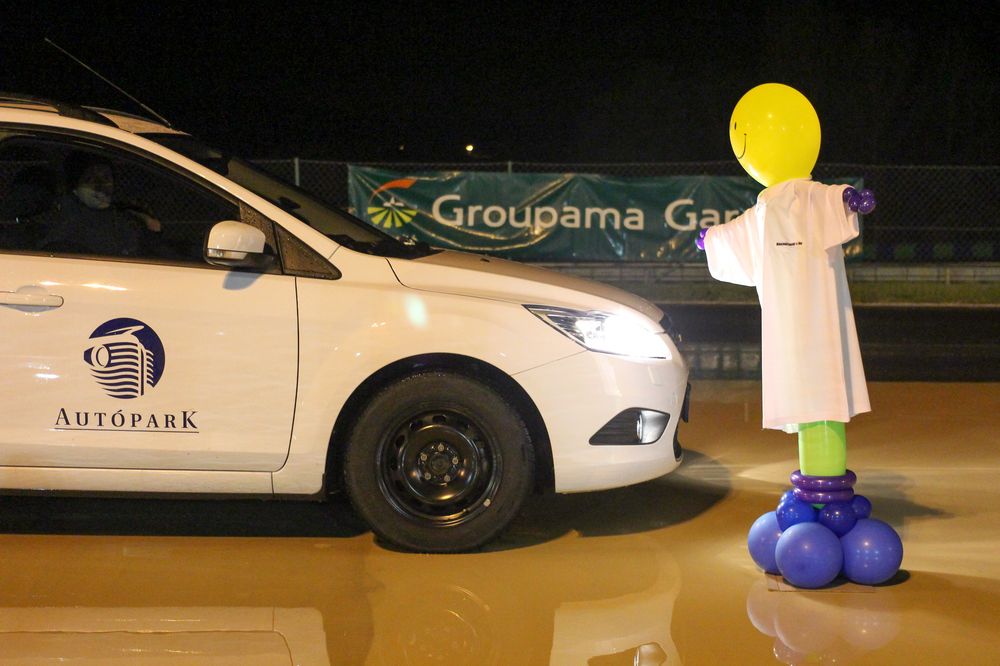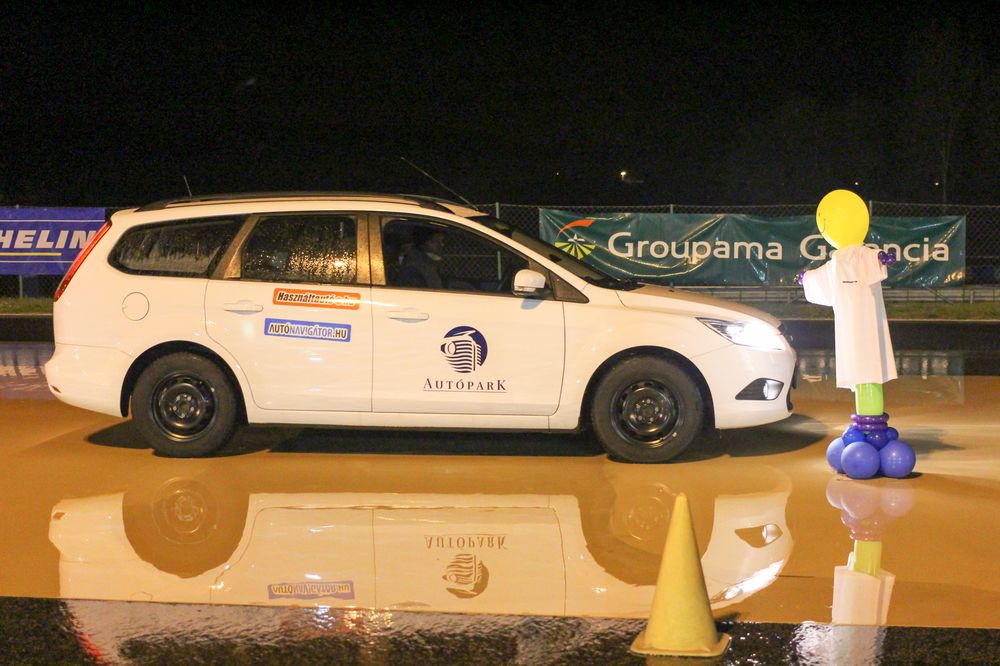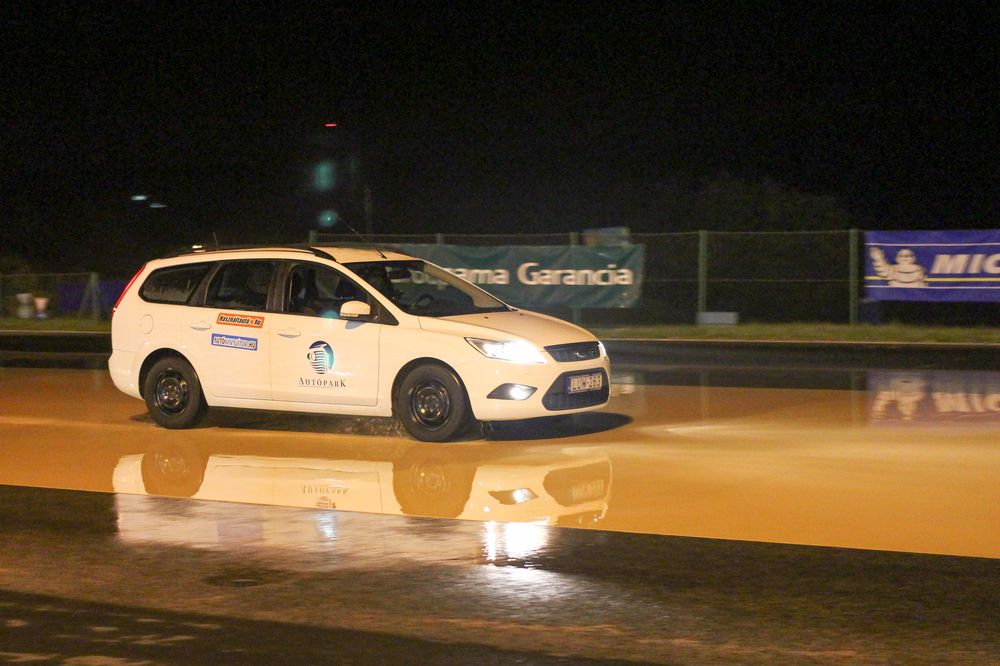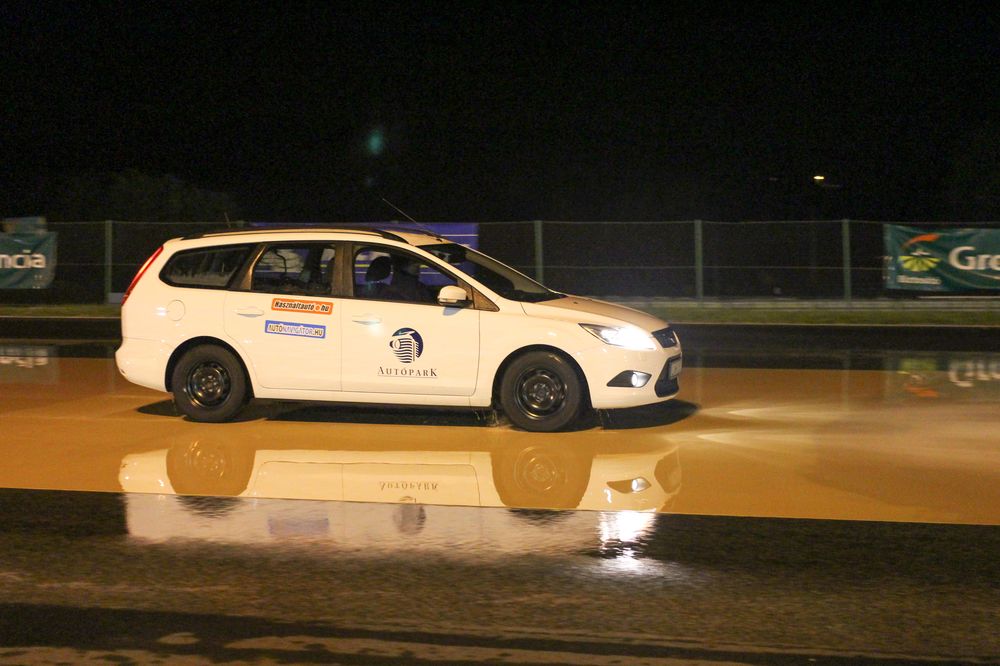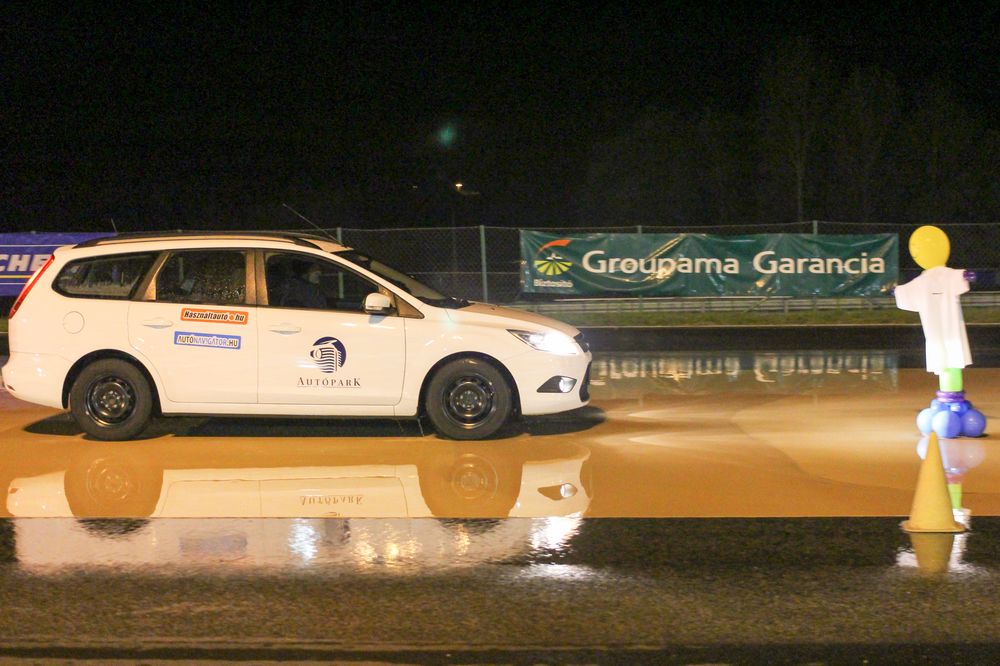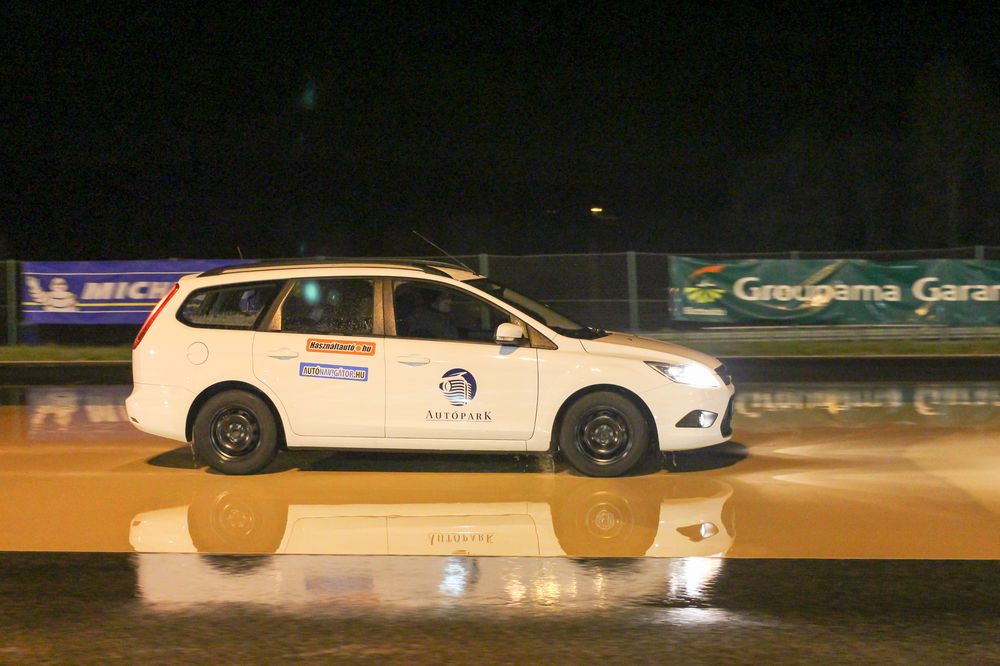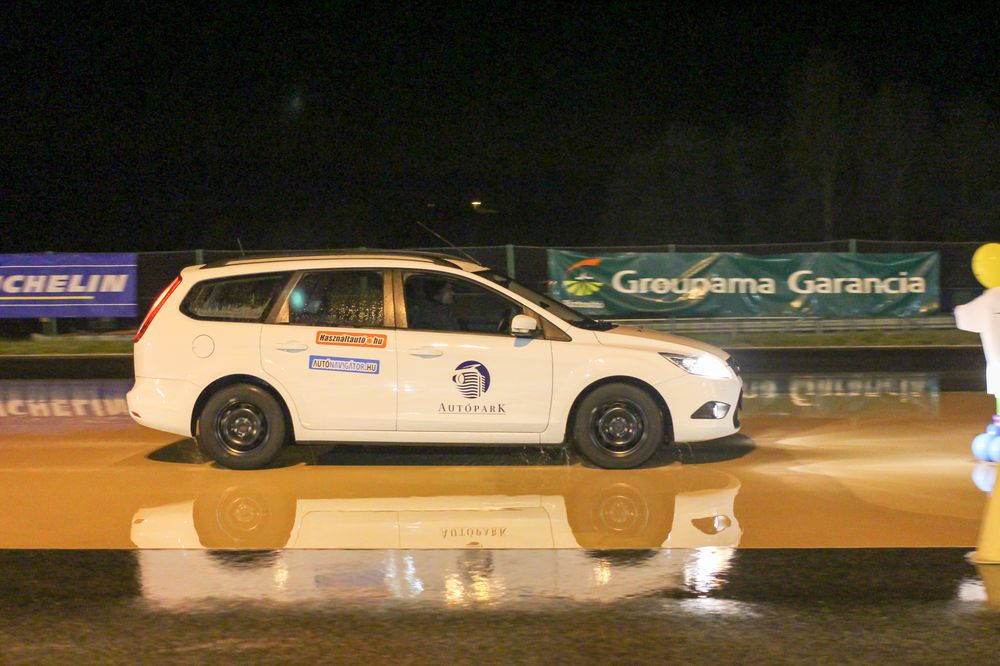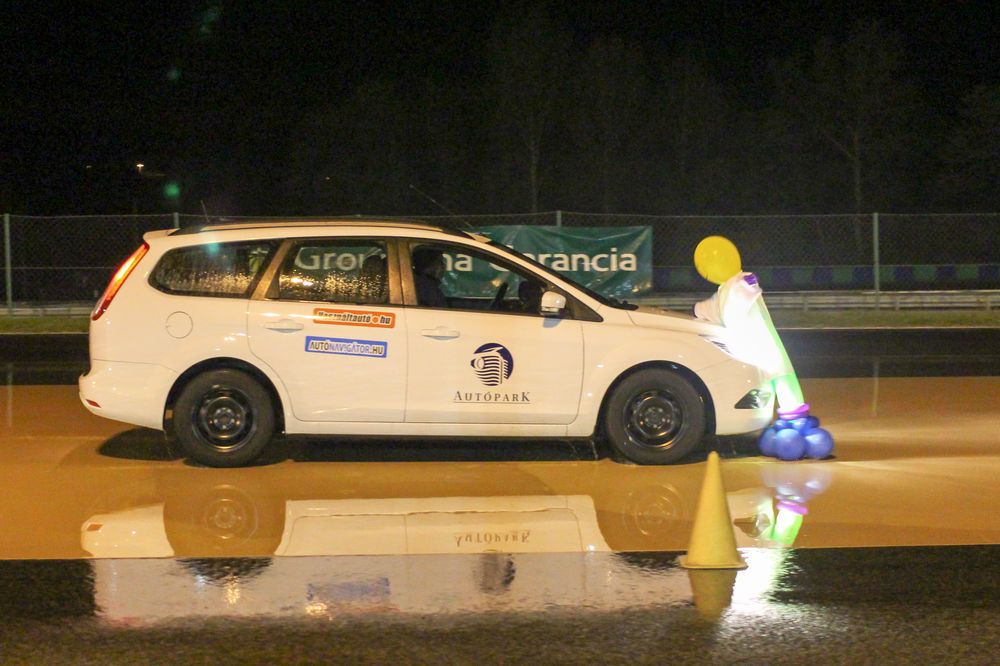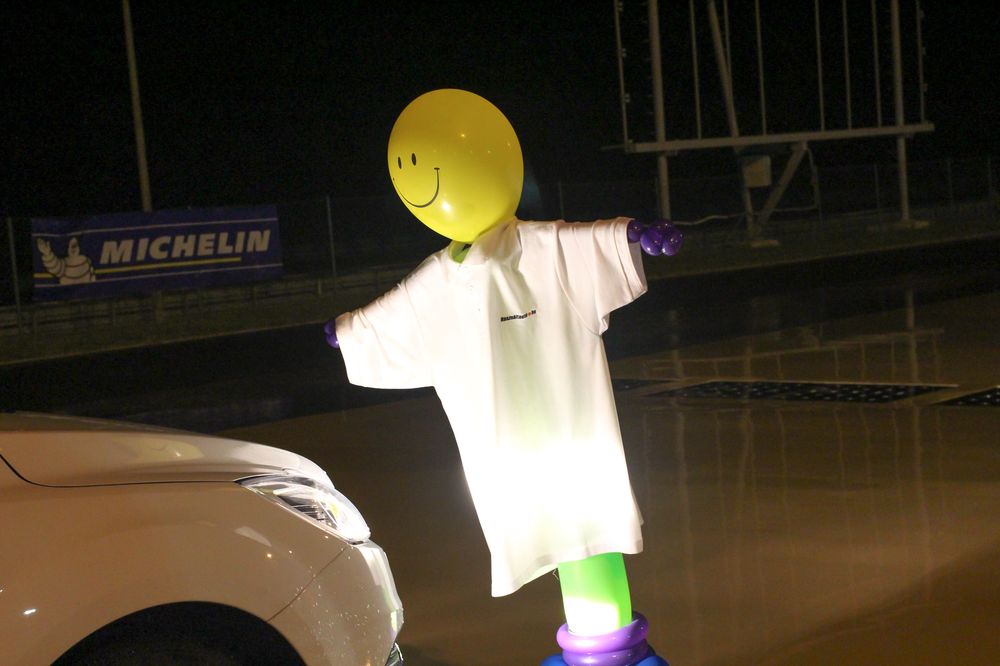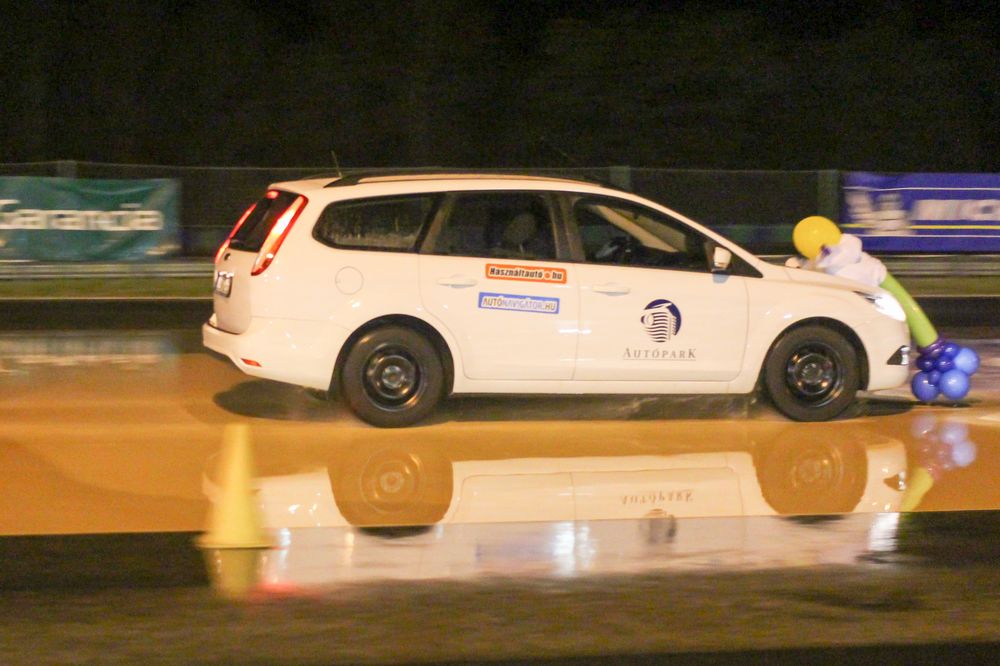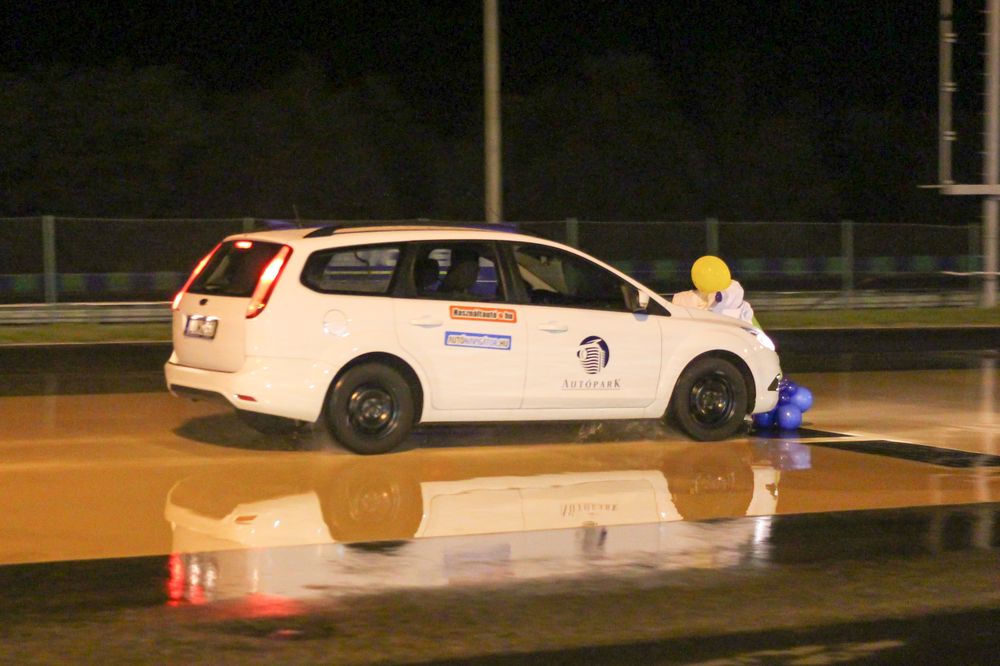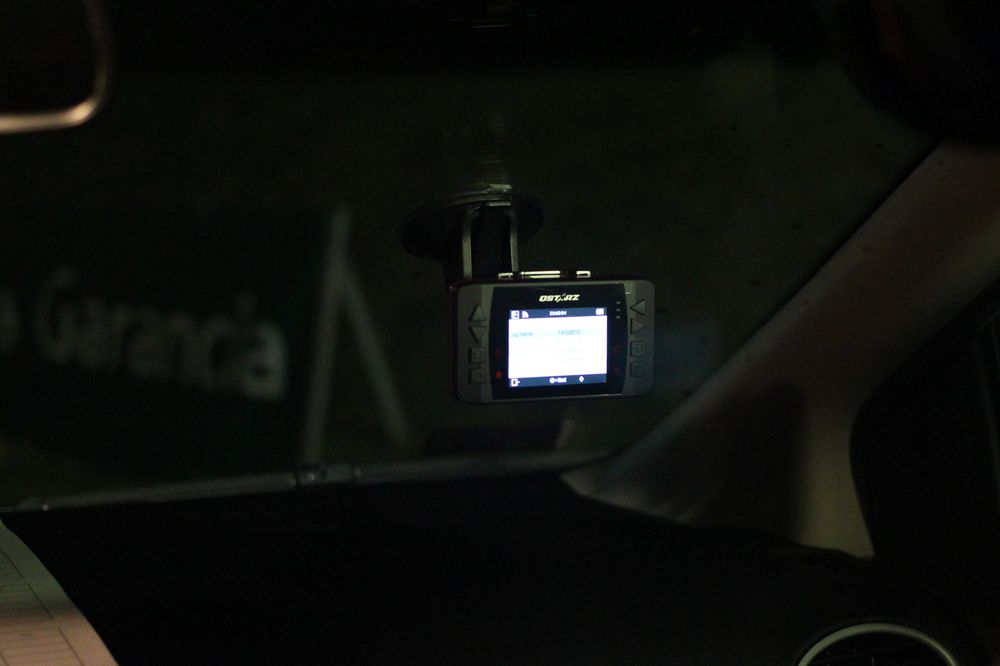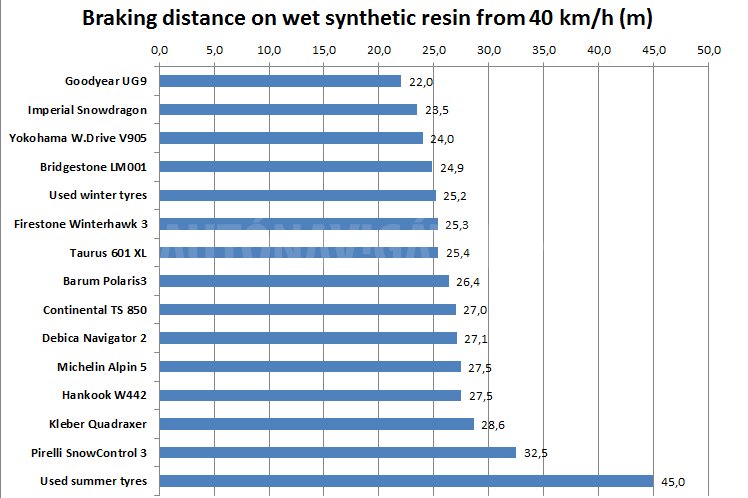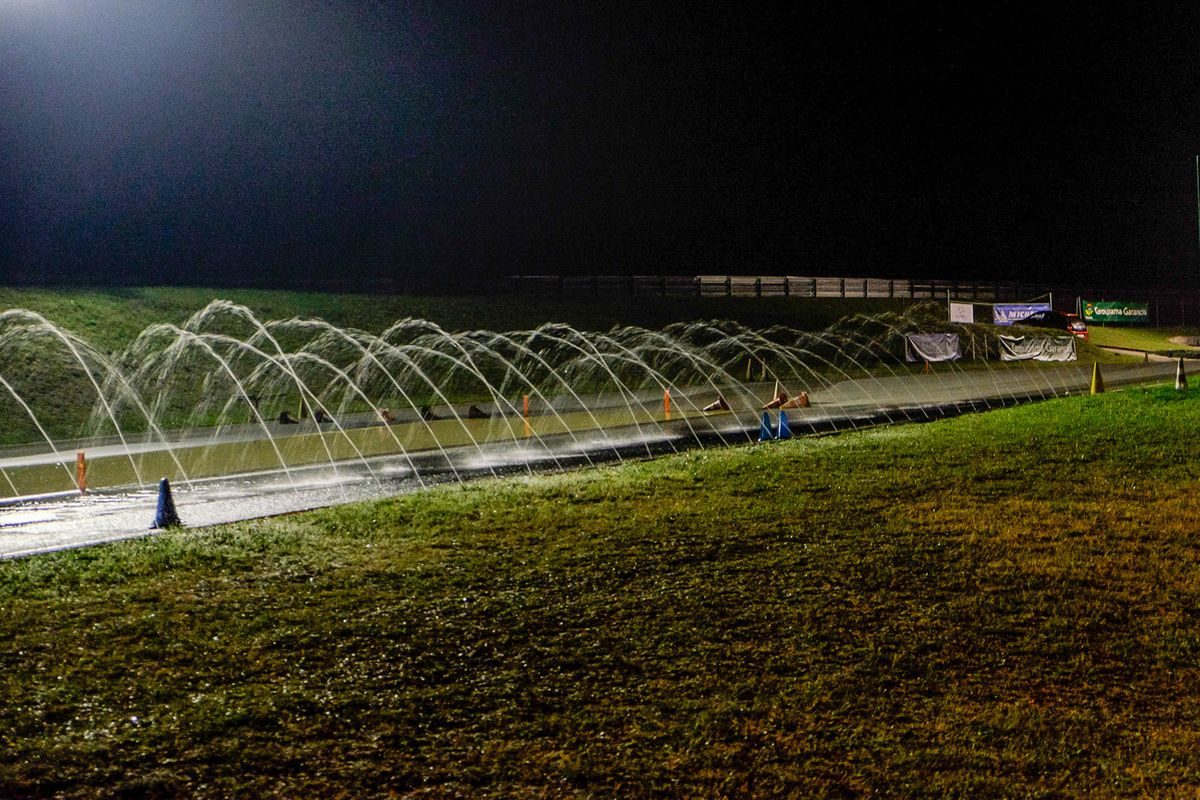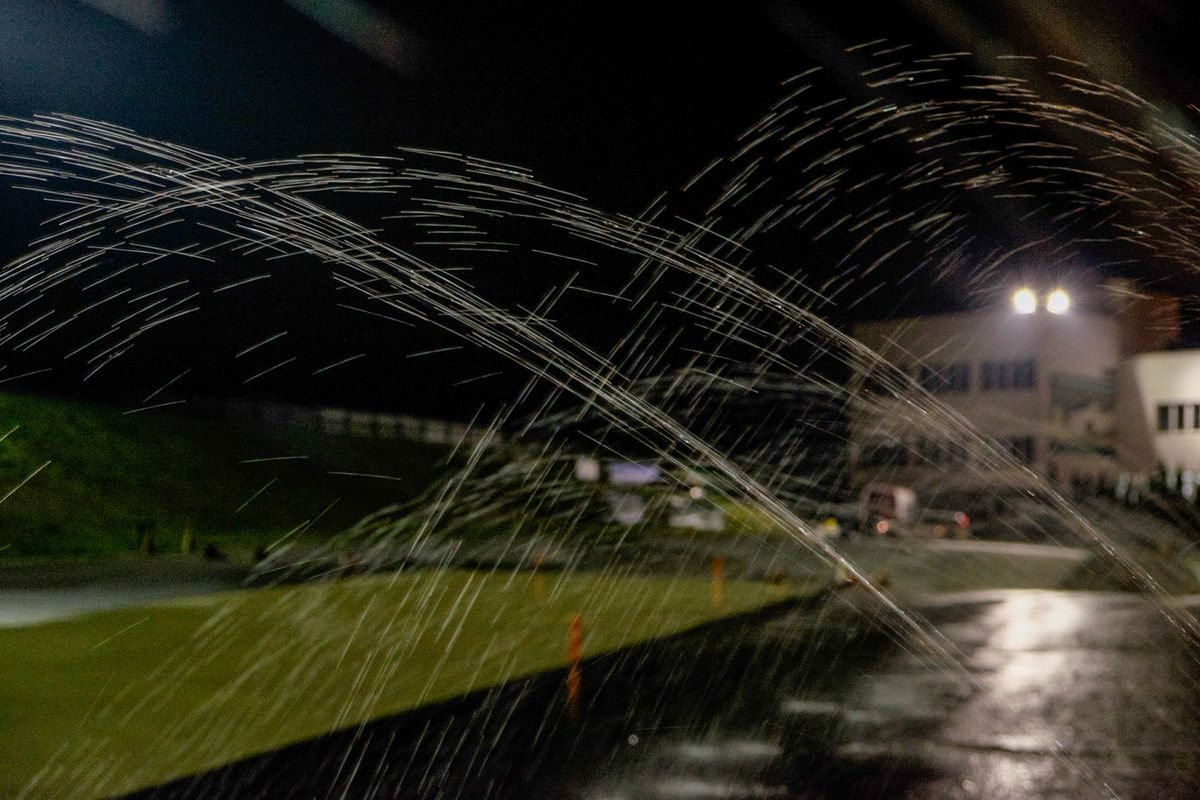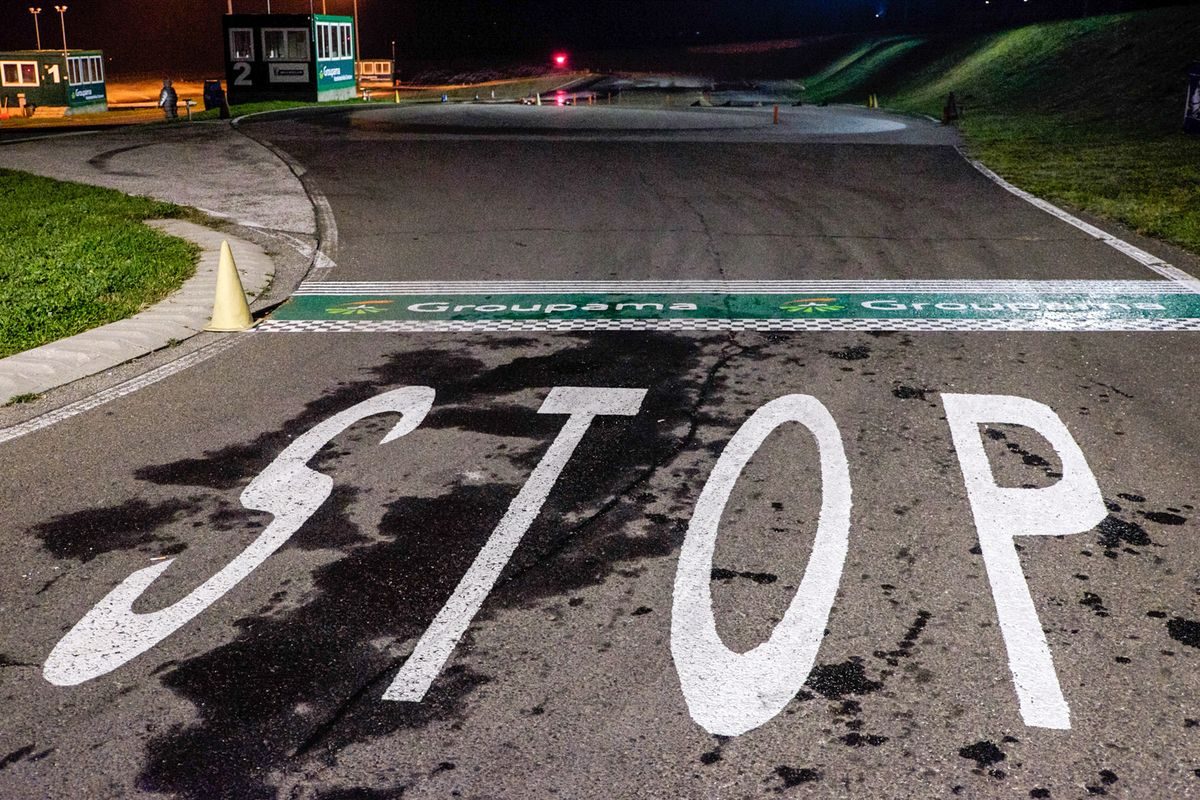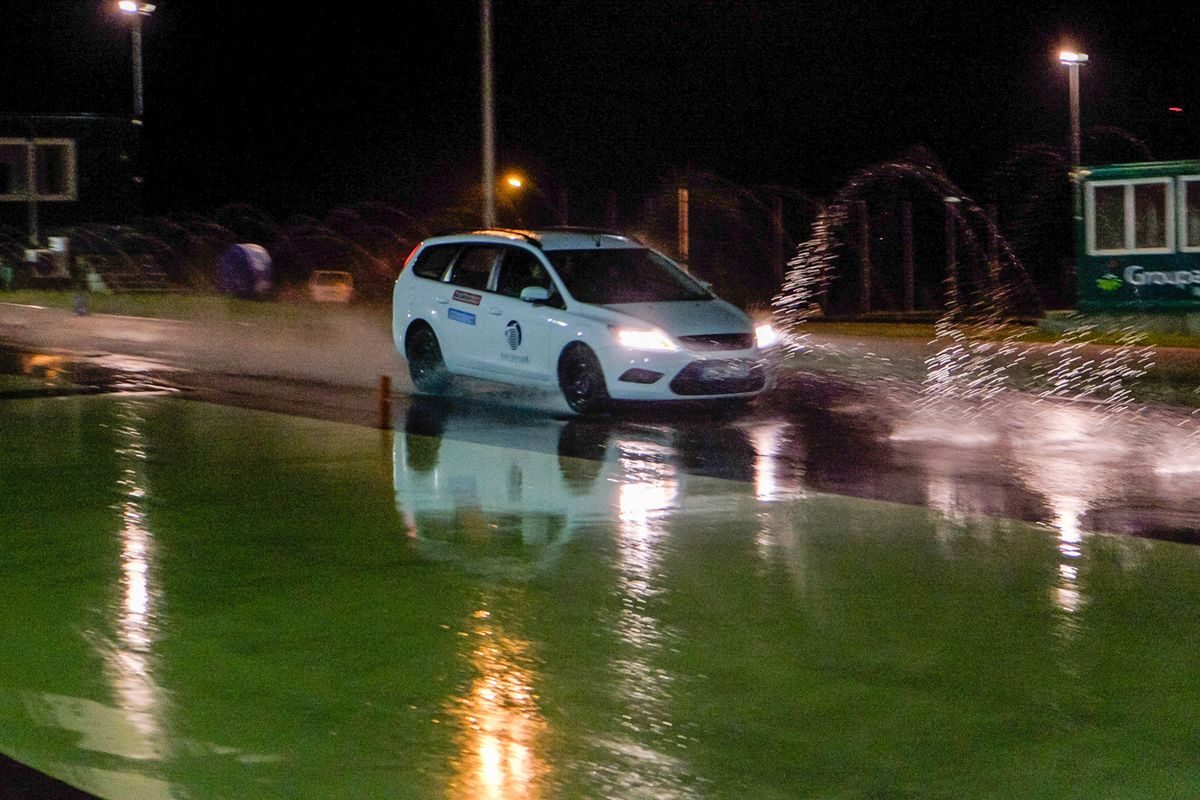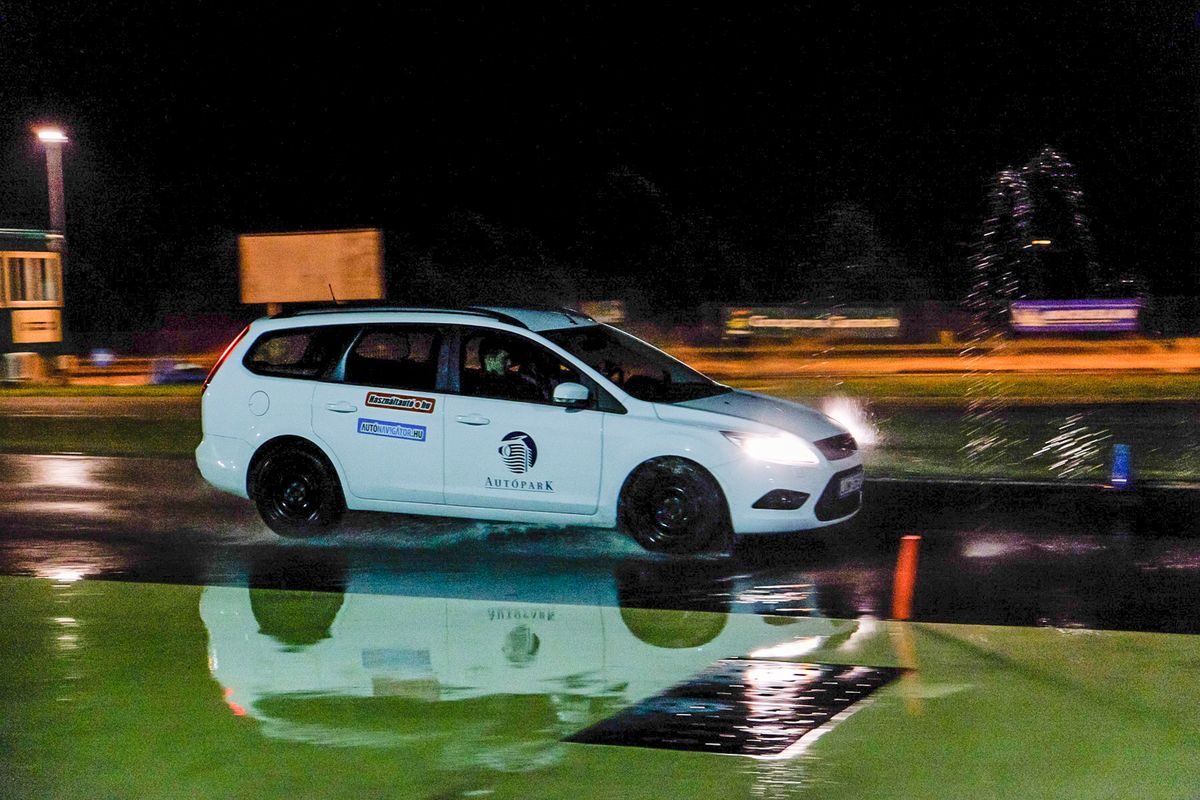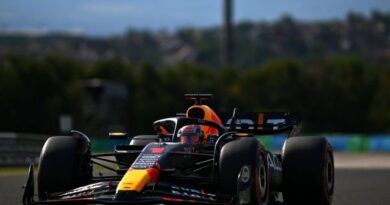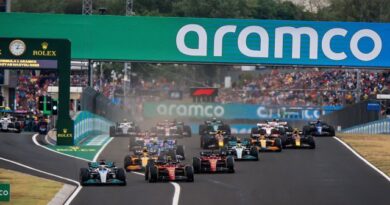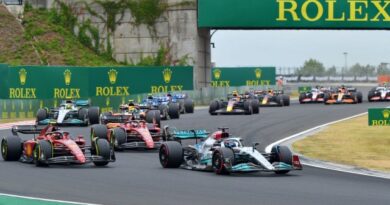We tested many tyres in winter. Find yours!
Winter tyre test 2014: 15 sets of tyres once again put to the test on the Hungaroring
Ez a cikk több mint 90 napja frissült utoljára, ezért kérjük, az olvasása során ezt vegye figyelembe!
The joint test by Autónavigátor.hu and nonstopgumi.hu once again compared tyres on Hungarian under winter conditions.
Just like in the past two years, we carried out this year’s tyre tests together with the team at nontsopgumi.hu, over the span of a single night on the practice lanes of Mogyoród-based Groupama Garancia Vezetéstechnikai Centrum, and in the home stretch of the Hungaroring
Although the temperatures at the time of publishing this article might suggest otherwise, the time to change tyres is clearly upon us, and we say this not just based on factory recommendations but based on our own measurements as well. This is our third year of conducting tyre tests for traffic safety reasons together with the team at nonstopgumi.hu and the provider of the testing grounds, Mogyoród-based Groupama Garancia Vezetéstechnikai Centrum located right in the middle of the Hungaroring. No one else in the country, not even car clubs, are doing tyre tests on a similar scale. The cars used for the measurements were once again the same—completely identical Ford Focus estate cars formerly in police service. We compared the tyres over the span of a single night in order to be able to work under relatively uniform temperature conditions—ground temperatures were 4 °C at the start of the test at around 6 p.m., and 1 °C at the end (at 3:45 a.m.). Our goal was to find out which tyres delivered the safest driving experience in winter conditions. We selected a total of 15 sets—or, to be more precise, credit for selecting them goes to the team over at nonstopgumi.hu, who not only supplied the tyres but were also busy mounting them all night while we were doing our measurements. We also tested this year’s main newcomers, the Michelin Alpin 5 and the Goodyear UG9. The latter was not even included in the latest ADAC tests, as the ADAC did their own comparisons much earlier, before the new model was even introduced. In addition to major brands of winter tyres, we also tested some less well-known ones that still sell well in the country, as well as some all-season tyres. We also checked how well an average set of used winter tyres performs, and what we can expect if we leave the summer tyres on.
We tested braking distances on both dry and wet asphalt, and on wet synthetic resin, and on the latter we also measured climbing power
- Braking distance from 120 km/h on dry asphalt in the home stretch of the Hungaroring
- Braking distance from 60 km/h on the wet asphalt of the practice track
- Braking distance from 40 km/h on wet synthetic resin (a surface with traction properties similar to ice) on the practice track
- Coasting from 15 km/h in order to test rolling resistance
- Noise levels at 90 km/h
- Climbing power on wet synthetic resin: the time it takes to travel the first 30 metres from a standing position
The main factors for our comparison were braking distance, and climbing power on wet synthetic resin. We also performed emergency braking from 130 km/h in the home stretch of the Hungaroring. The hazard lights were up and the emergency brake assist was hard at work. We repeated this manoeuvre five times per tyre—75 times in all—as we did with all measurements, to obtain a meaningful dataset from which averages can be calculated even when omitting the best and worst results. We measured rolling noise at 90 km/h, and tested the tyres’ rolling resistance when coasting down from 15 km/h. Of course we did not read these speeds from the speedometer, and neither did we measure braking distances with a measuring tape—all the data were measured using high-precision GPS instruments. This included not only dry surfaces in the home stretch but also wet sections on the practice track, where we tested braking distances from 60 km/h. Or at least we did on asphalt. On the wet synthetic resin that was meant to simulate icy roads we only went up to 40 km/h. Any higher than that and we would simply have slid off the track, forcing us to complete the braking action on concrete. While this still would have posed no accident risk, the measurements would have been useless.
Although this year’s contest was a close one, in emergency situations even one or two metres of braking distance could be critical. While on dry roads, the 15 tyres we tested had an average braking distance of 6.8 metres, on wet asphalt this went up to 7.3, and on wet synthetic resin to 27.5 metres
This means that 40 km/h is the speed where we had an overview of all parameters. None of the tyres out-performed the rest in every category, leading to some interesting results. While on both dry and wet asphalt, Pirelli tyres dominated the field, the same tyres fared quite poorly on wet synthetic resin. To be more precise, in our test, which we performed at temperatures just above the freezing point, they produced the longest braking distances of all new winter tyres (chronologically they were among the last sets tested). Their braking distance was in fact over 10 metres longer than that of the winner, this year’s newcomer, the Goodyear UG9 (which we tested at a later point, meaning at slightly lower temperatures).
None of the tyres perform equally well under all circumstances; we measured the largest differences on wet synthetic resin, which produced the longest braking distances. The figure clearly demonstrates how much longer braking distances are on the latter even from 40 km/h
It is quite clear that there are no major differences between the tyres on dry or wet roads; still, at 120 km/h there is an almost 5-metre difference between the best and the worst even on dry asphalt. Where best-performing Pirelli tyres had already brought the car to a stop, the worst performer still had it rolling along at 34 km/h. Surprisingly good results were measured with used winter tyres, which delivered the second best braking performance on dry roads, but this was more due to the good characteristics of the model we chose. What is more noteworthy is that the Chinese Imperial Snowdragon placed last, and summer tyres performed worse than winter or all-season tyres even at temperatures above the freezing point.
Even on dry roads there can be a car’s length in difference between the braking distances of tyres from 120 km/h. Where Pirelli tyres had already brought the vehicle to a stop, the Chinese Imperial still had the car rolling along at 34 km/h, coming to a stop 4.8 metres further
Our tables and charts show which tyres are good under what circumstances and which tyres are best on what type of road surface (all the measurements can also be downloaded in a single document). However, when choosing tyres, the buyer’s knowledge based on their own preferences is the most helpful. With our application (see the end of the article), you can check for yourself which model of tyres suits your own expectations best. For our final assessment, we calculated 30% each for braking distance on dry and wet roads, 15% each for braking and climbing power on wet synthetic resin, and 5% each for noise levels and rolling resistance, the latter being a factor in fuel consumption.
Our ranking for the final assessment was based on the above weighting. We intentionally did not number the ranks in the table, as the aggregated differences in the capabilities of the various tyres are so small that it is only worth highlighting that the Goodyear UG9 had the best score of 95% when looking at all values measured. We can proclaim these tyres to be the winner, and give the second place to the Yokohama W.Drive V905 with its 93% score. With the rest, however, there are hardly any differences. A score of 92% (shown in the table in a descending order based on additional decimals, of course) was achieved by the Barum Polaris3, the Bridgestone LM001, the Firestone Winterhawk 3 and the Continental TS 850. Following them, with a slightly lower score of 91%, are the Michelin Alpin 5, the Hankook W442 and the Taurus 601 XL, also from Michelin, as well as the Pirelli SnowControl 3. The above are all good tyres. It is interesting to note that while ranked last among the good ones based on aggregated and weighted results, the Pirelli performed best on both dry and wet asphalt, and can perform well in Hungarian winters. In this year’s test, the Continental TS 850 and the newcomer Michelin Alpin 5 performed surprisingly poorly on synthetic resin. We could hardly believe their results ourselves, and so we agreed with nonstopgumi and the team of the practice track to test another set of these models, the results confirmed the earlier experience.
Braking distances are more than twice as long with summer tyres—this goes to show how much proper tyres matter on ice even when braking from a speed of 40 km/h. While the Goodyear UG9 could stop over a distance of 22 metres, summer tyres slowed down by only a fifth of the initial speed, to 32 km/h, over the same distance
What is clear already at this point, however, is that the used winter tyres we tested (10 years old and with a tread depth of 2 mm), as well as the all-season Kleber Quadraxer and Debica Navigator, and the Chinese Imperial all represent a compromise solution. And using summer tyres in winter is a bad idea altogether. Non-season-appropriate tyres produced some of the longest braking distances even at temperatures above the freezing point and on dry asphalt, causing the ‘ex police car’ to stop at a 4.1 metres farther when braking from 120 km/h. Those extra 4.1 metres could mean the lives of two families or a whole group of kindergarteners, and the Chinese Imperial is even farther behind, by almost 5 metres. Can this be worth it? On wet asphalt, the extra distance with summer tyres is 2.3 metres from speeds as low as 60 km/h—the same, by the way, as with the Taurus 601 XL. Michelin product or not, the latter is quite noticeably second-rate.
There were no major differences in braking distances on constantly watered, uniformly wet asphalt either, with two-thirds of the field performing well at near-freezing-point testing conditions. Still, even here the Chinese Imperial had a 3.5 metres longer braking distance than the best-performing Pirelli
As dictated by experience and the laws of physics, the largest differences were measured on wet synthetic resin, meaning that, unsurprisingly, drivers can expect the biggest surprises on icy roads. Even a good set of summer tyres has almost twice the braking distance of a set of winter tyres (and as speed goes up, the difference grows exponentially). Once again we can only point out that in the tested 195/65 R15 size range, the cost of a set of winter tyres in Hungary (200–325 dollars) is the same as the excess of a Casco insurance. And this is not simply about material damage—people’s lives could depend on it. It is not only important to have winter tyres but also to choose the type that is most suited to and performs best under the circumstances of use. While a good set of tyres can allow us to stop just before a suddenly appearing or late-noticed pedestrian, with a different type we could hit them (braking on ice from 40 km/h, the braking distance of the Goodyear UG9 is 1.5 metres shorter than that of even the second best performer). With summer tyres, on the other hand, we would hit them at very high speeds, probably causing fatal injury. The prices of the tyres are not always proportionate to their capabilities. The table below shows the tyres tested in the ranking from our final assessment, with prices by nonstopgumi.hu.
It can perhaps be debated how definitive the order established in our test is, but the extremes are not worth disputing. The percentage scores demonstrate it quite well that the majority of the field performed well, and we could already see even in tests without snow that all-season tyres are not an ideal choice. Also, the tests actually left their mark on the Debica Navigator, as well as on the Chinese Imperial tyres. We cannot recommend these based not only on this latter fact but also based on their capabilities. And the most important message here is clearly that our tests, too, proved that summer tyres are inadequate, even near the freezing point on dry asphalt, and especially on wet roads or ice. You can do the calculations with tyre performance and prices yourself. In the application below, simply click to select the capabilities that matter the most based on your own preferences to see which tyres are the most suitable.
